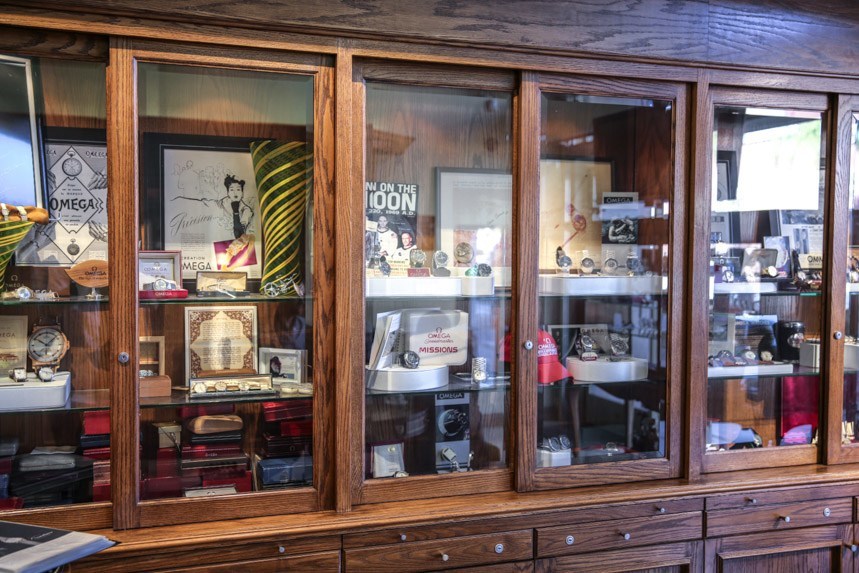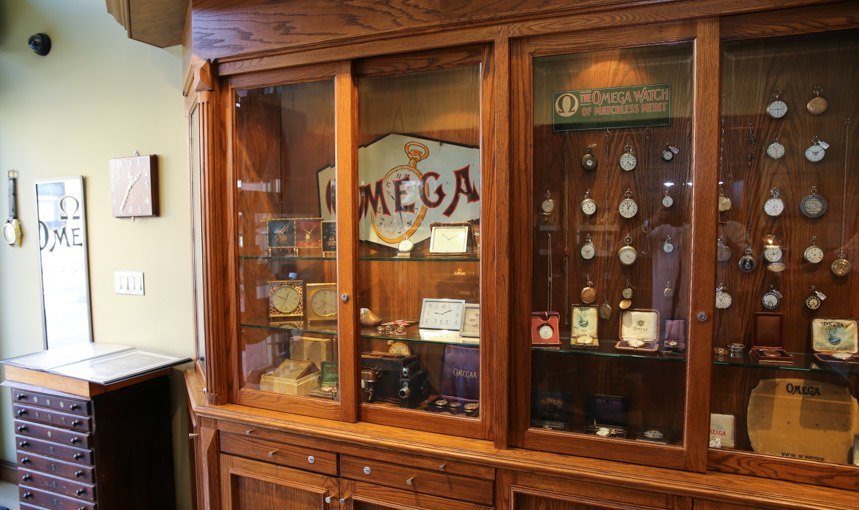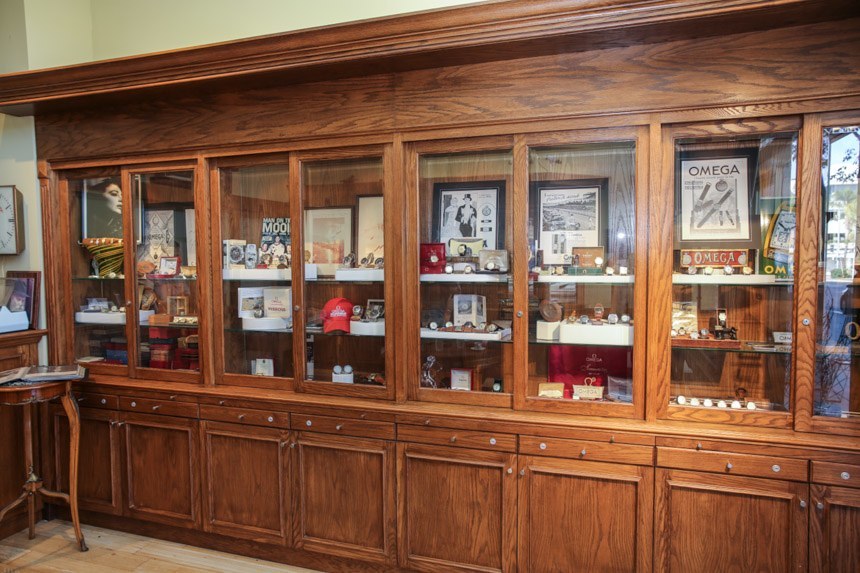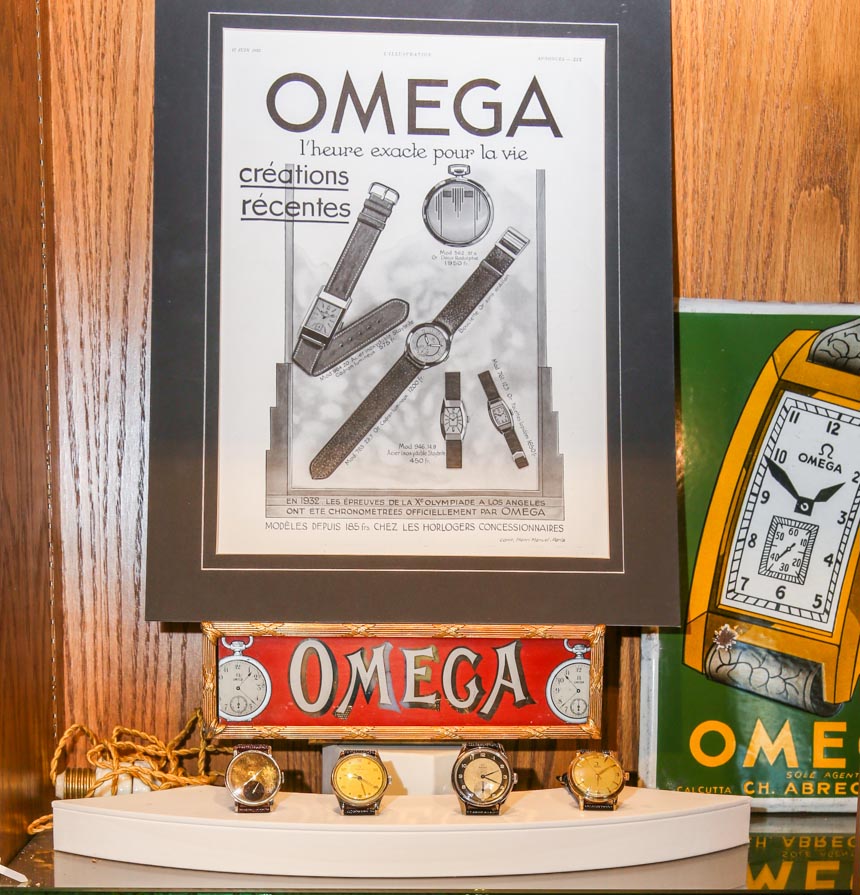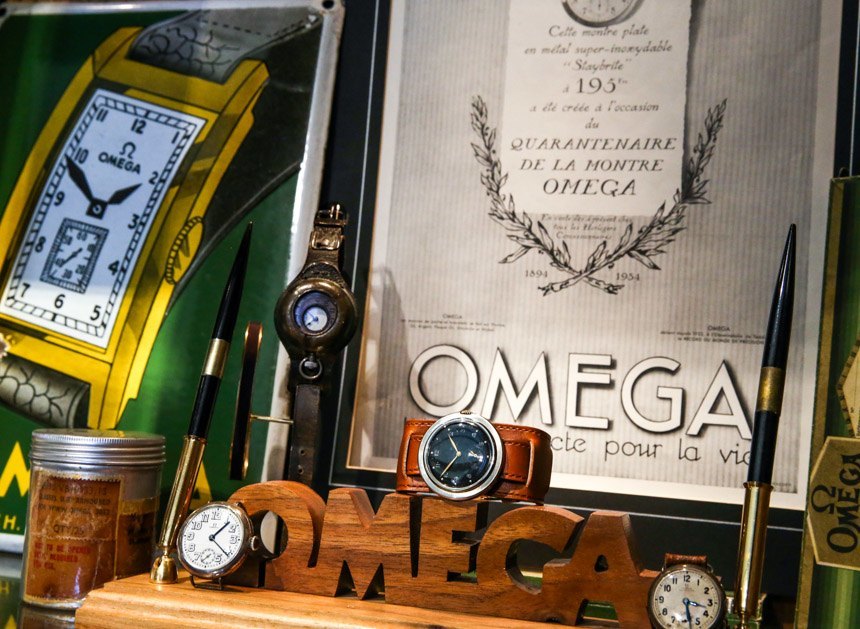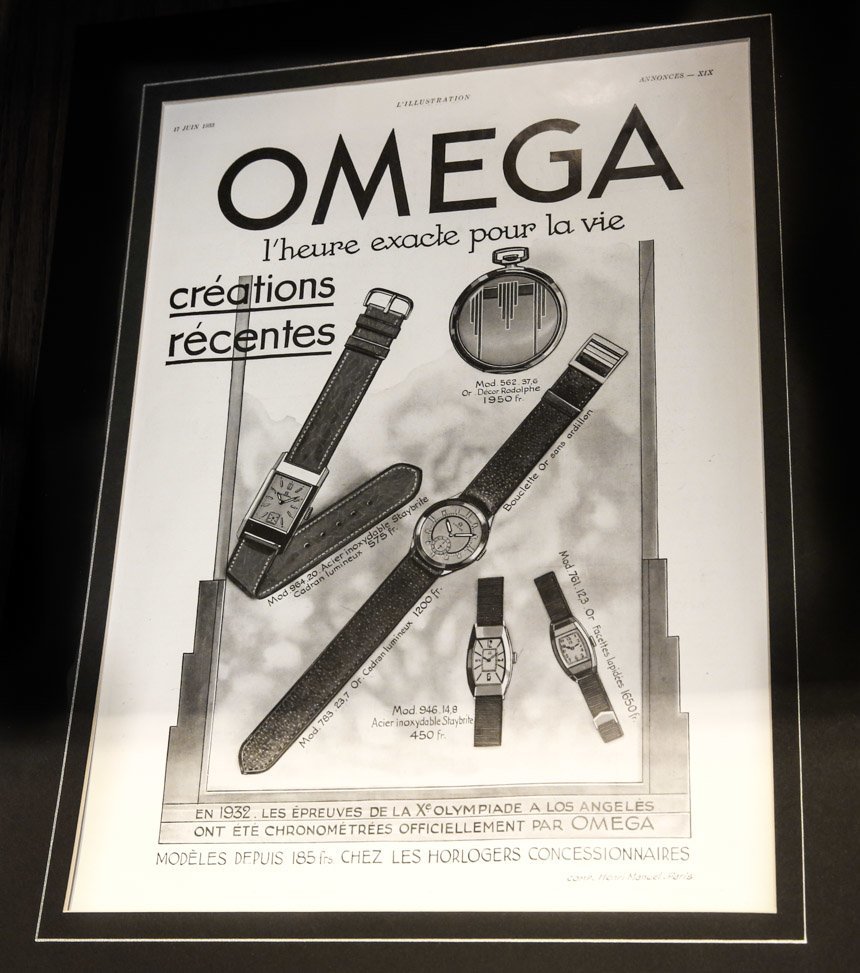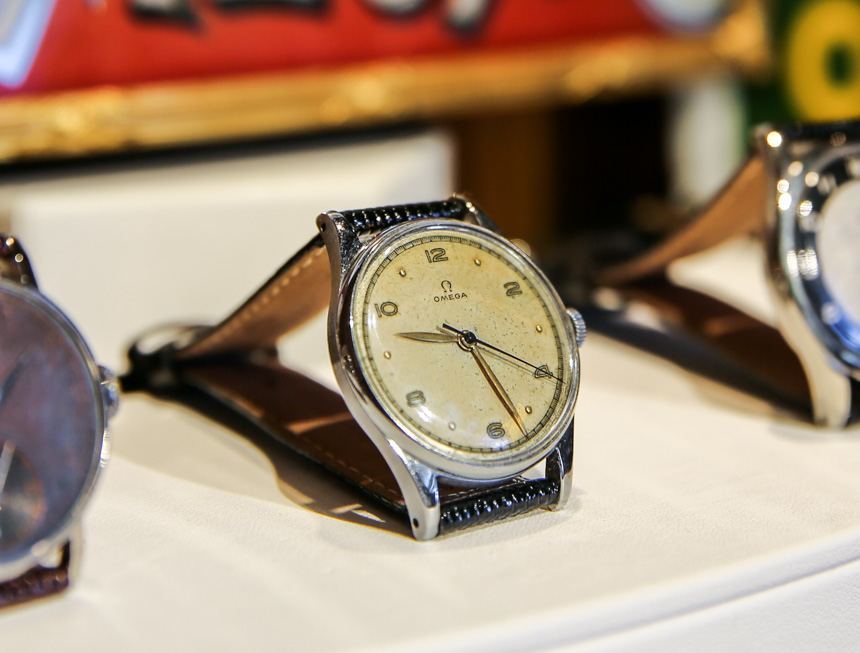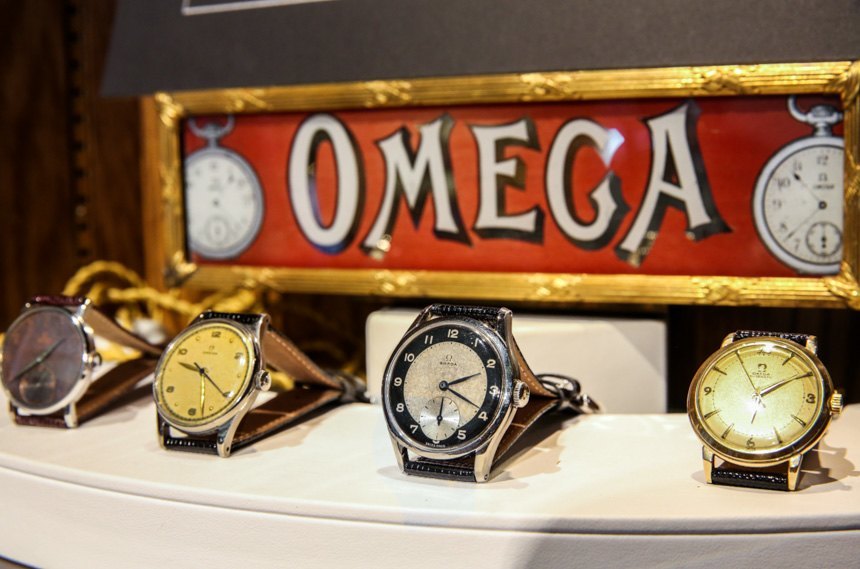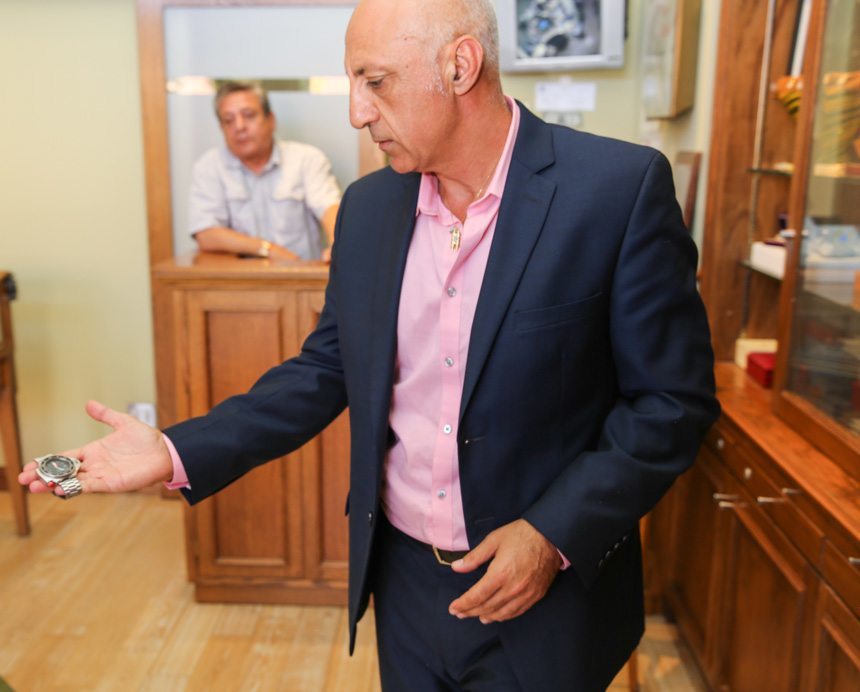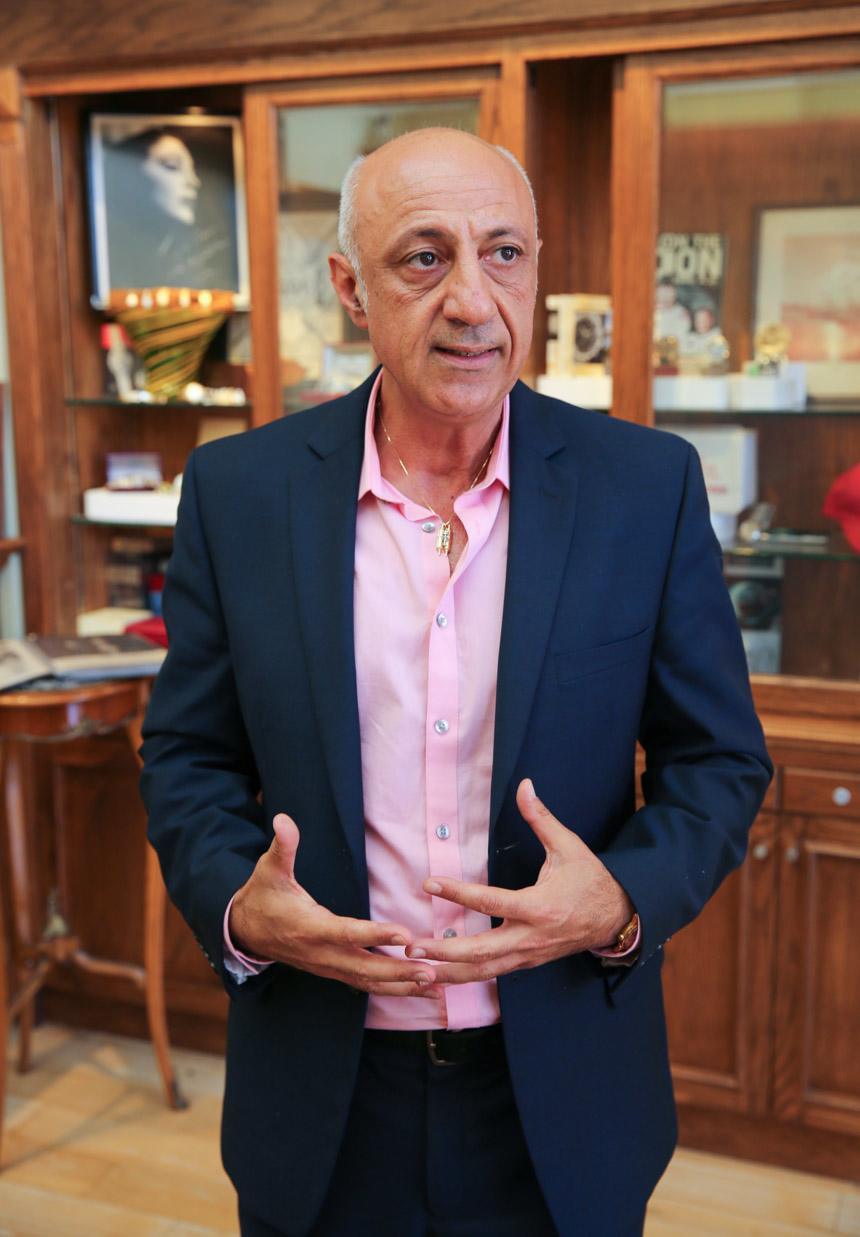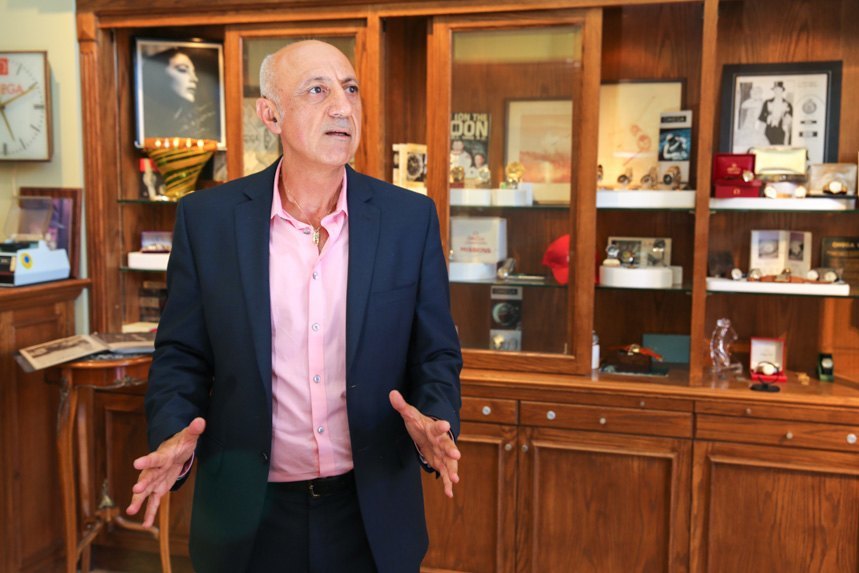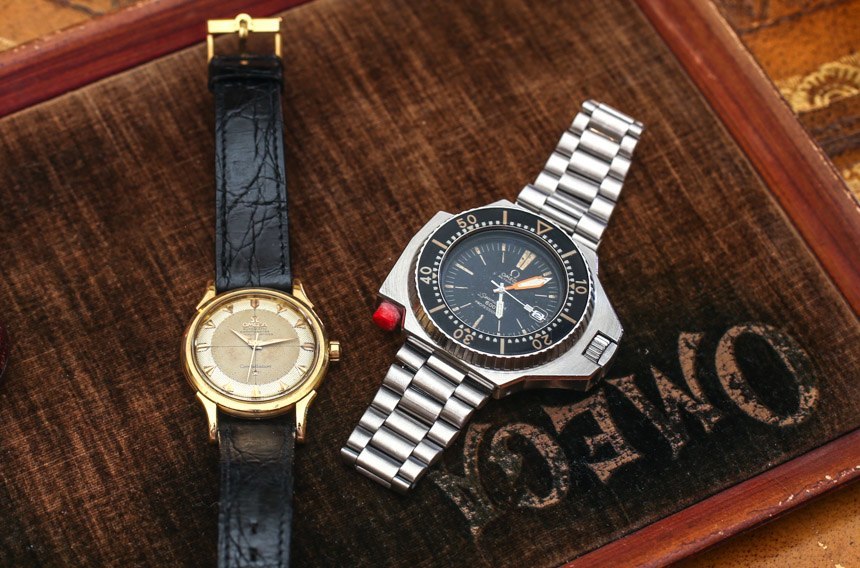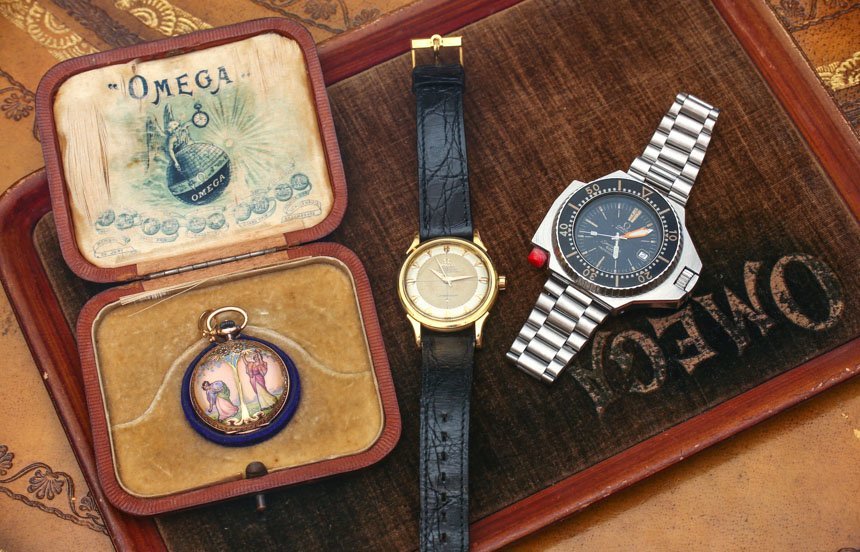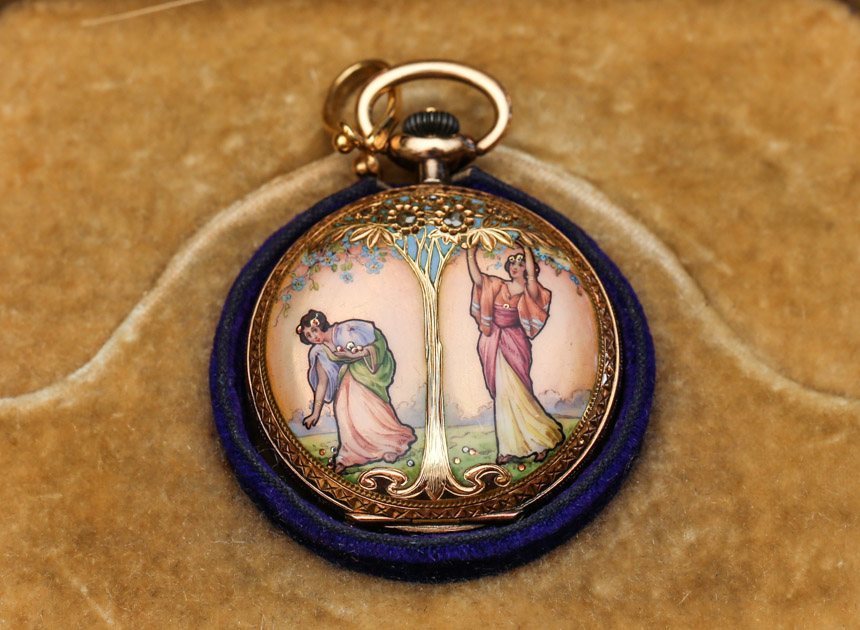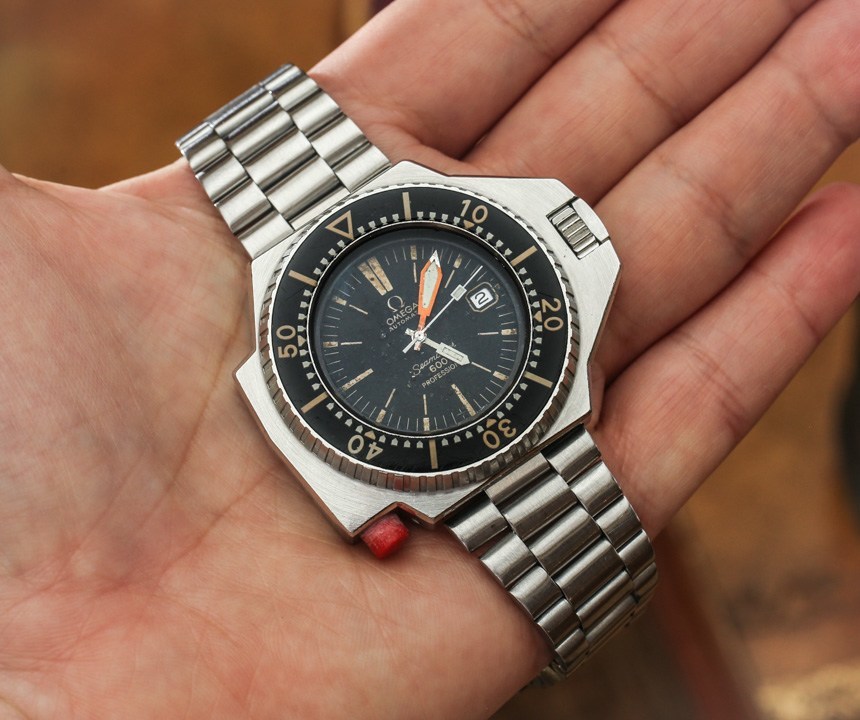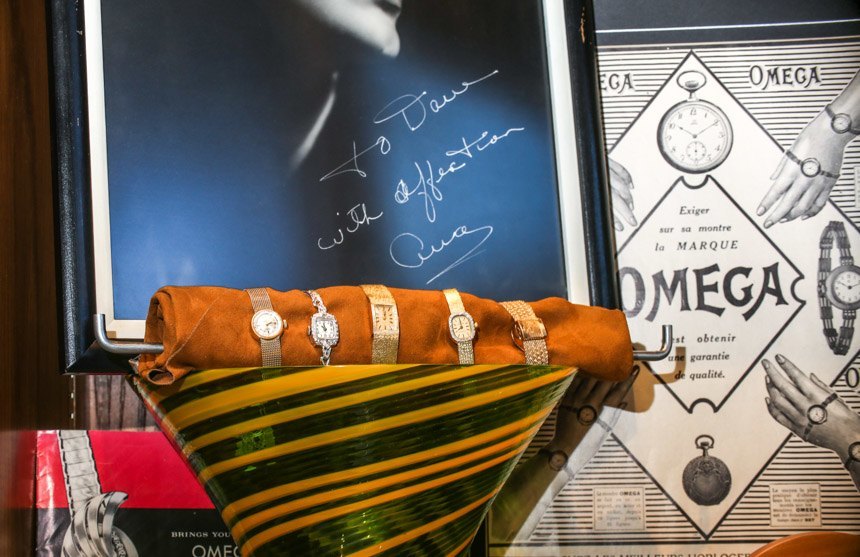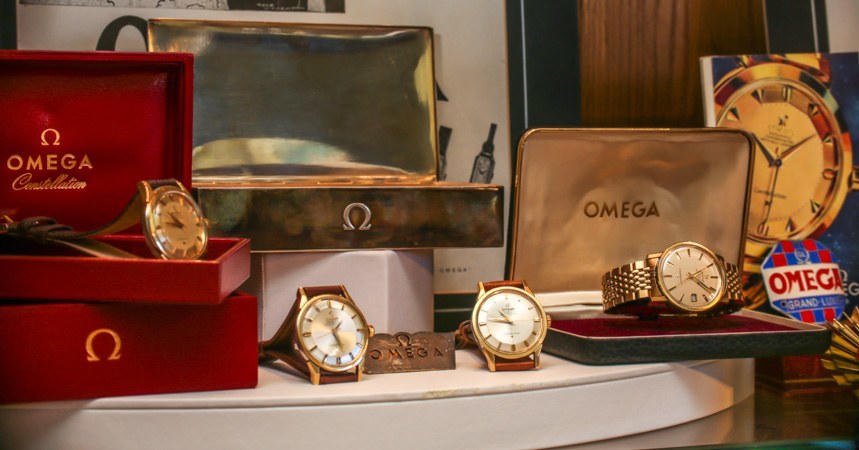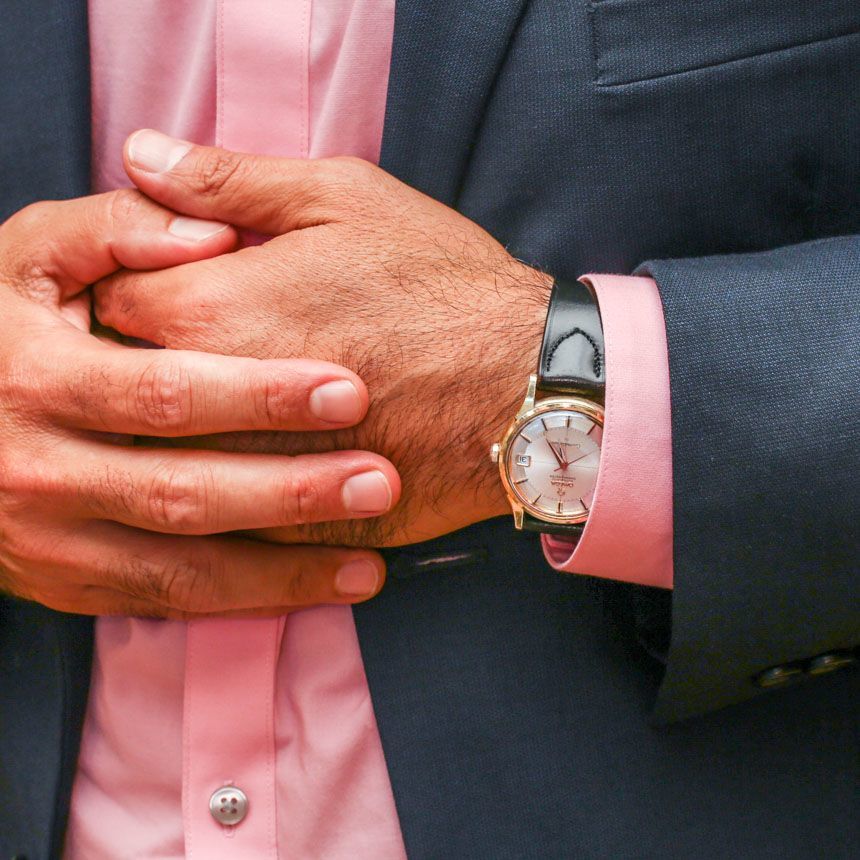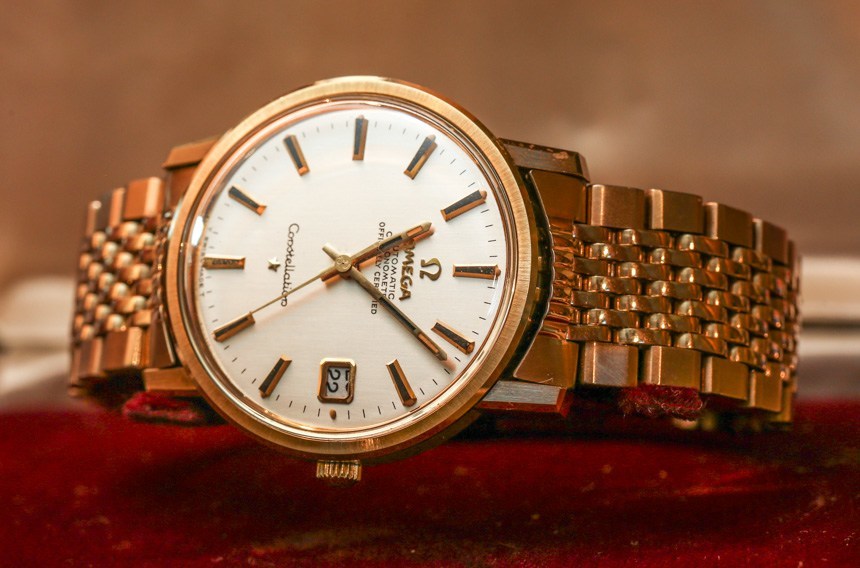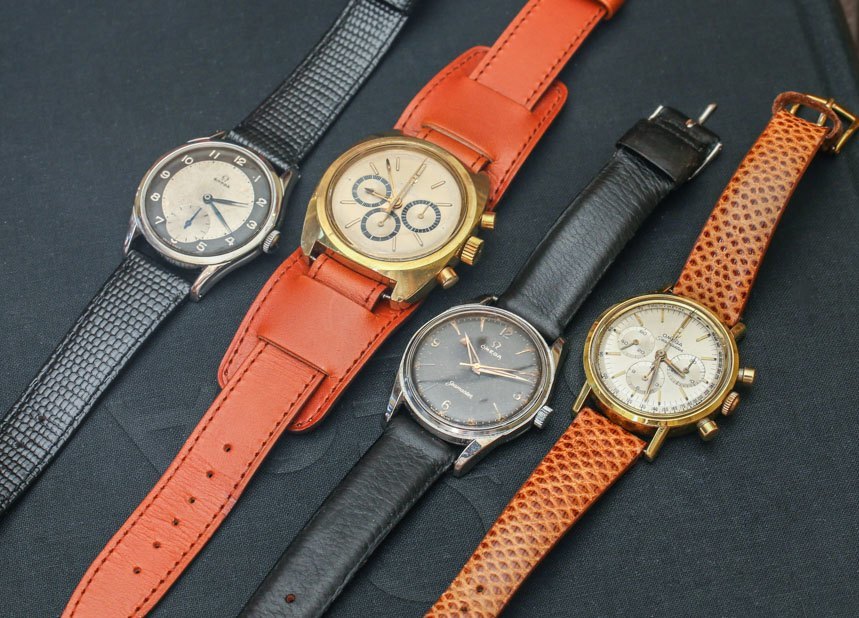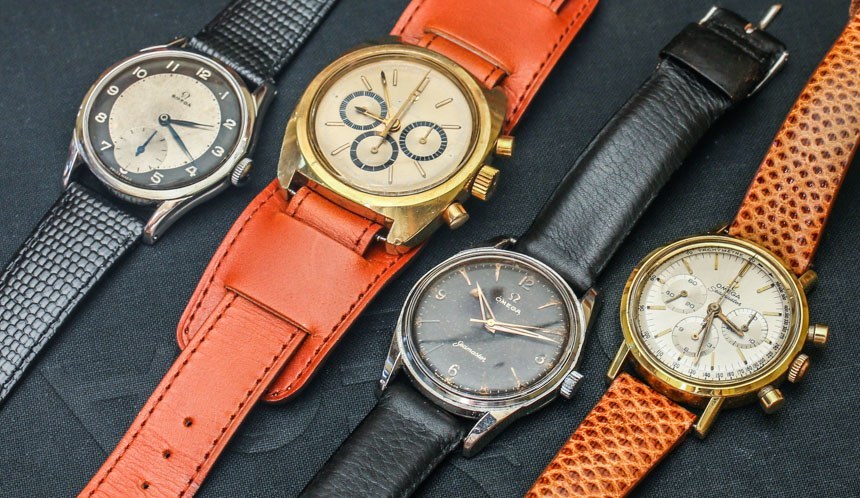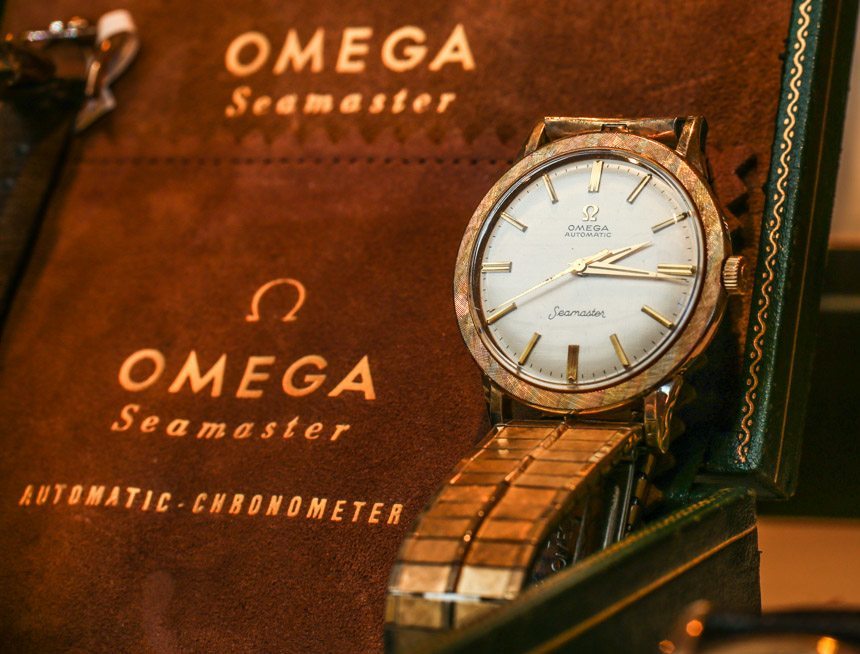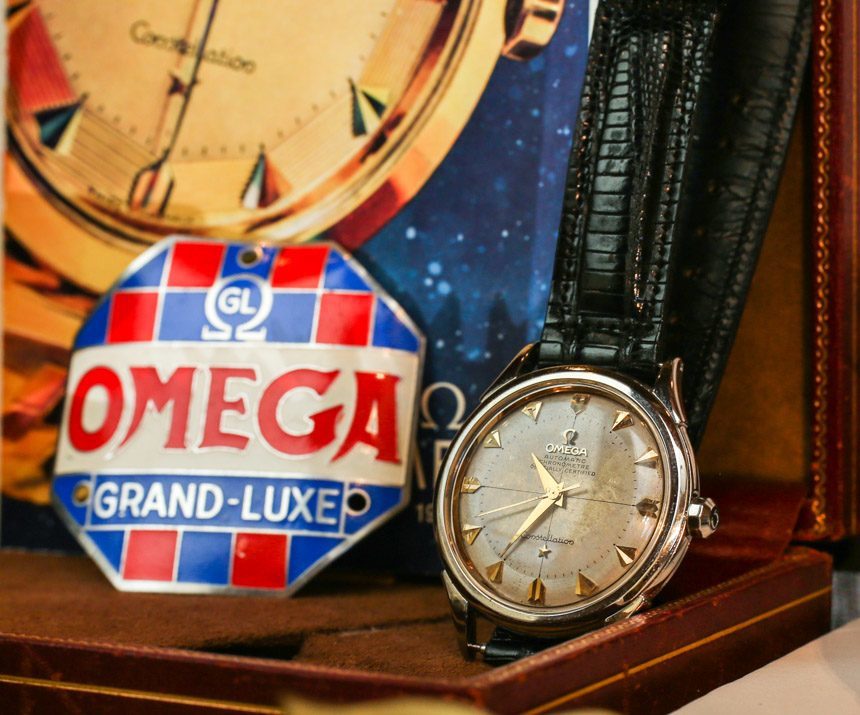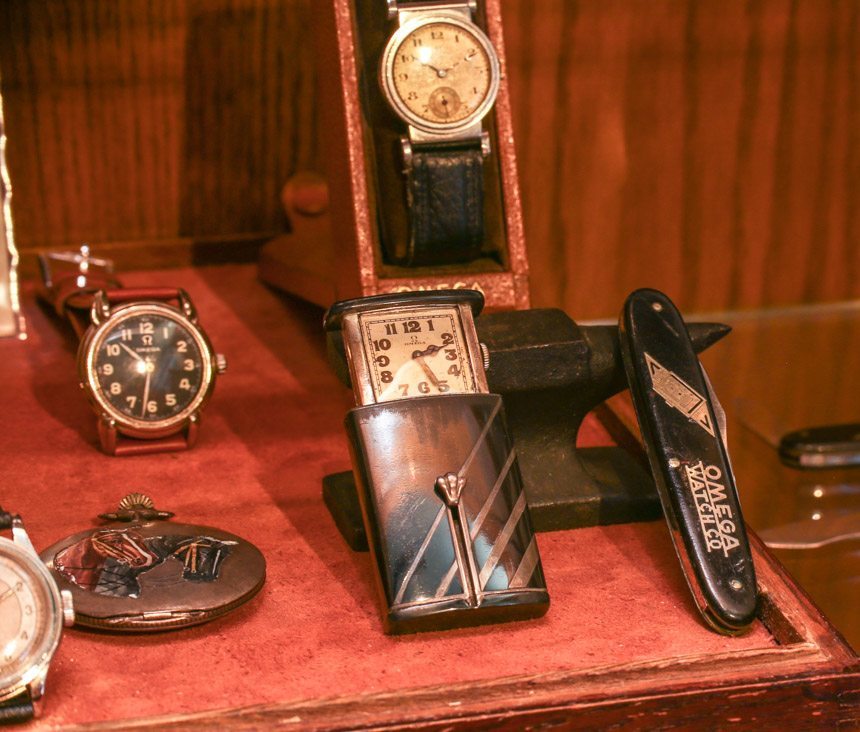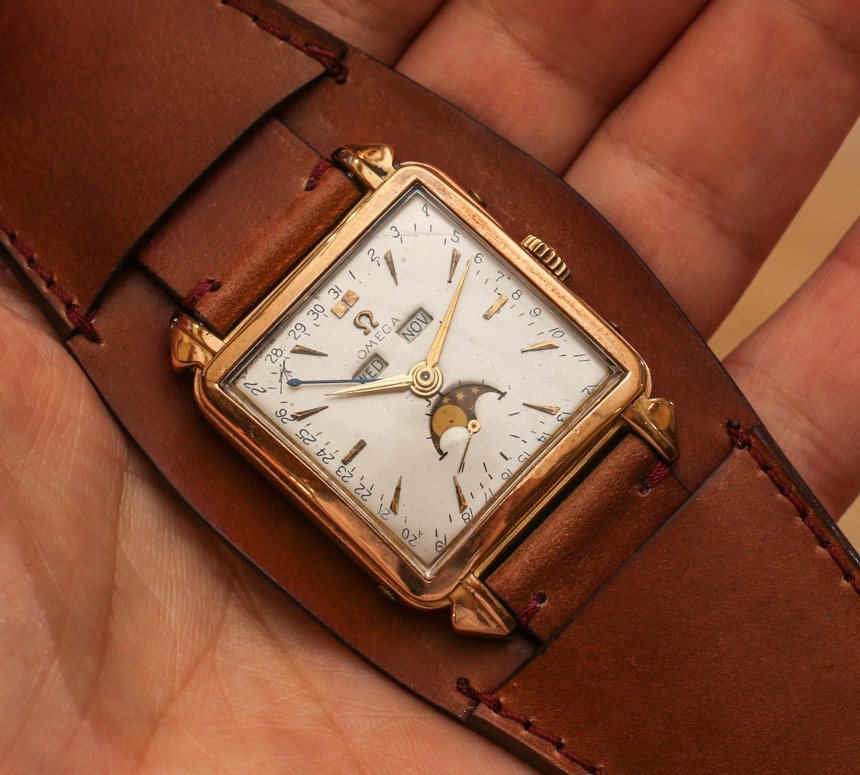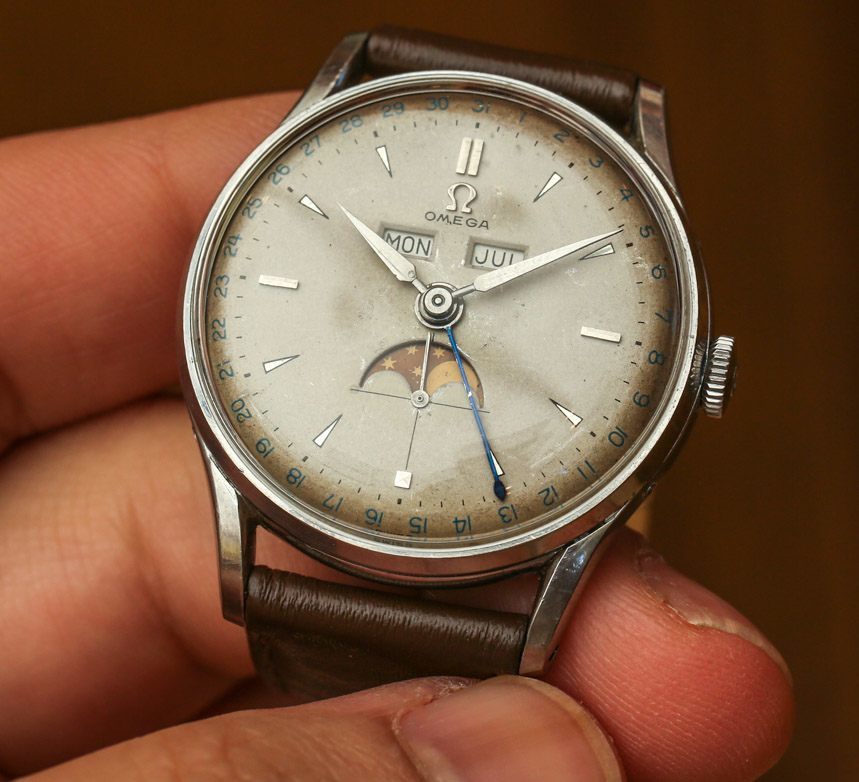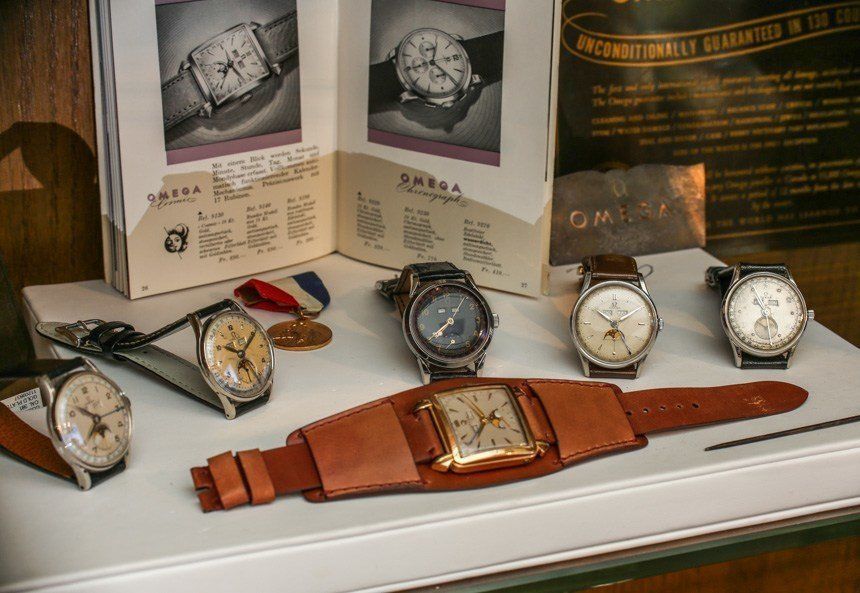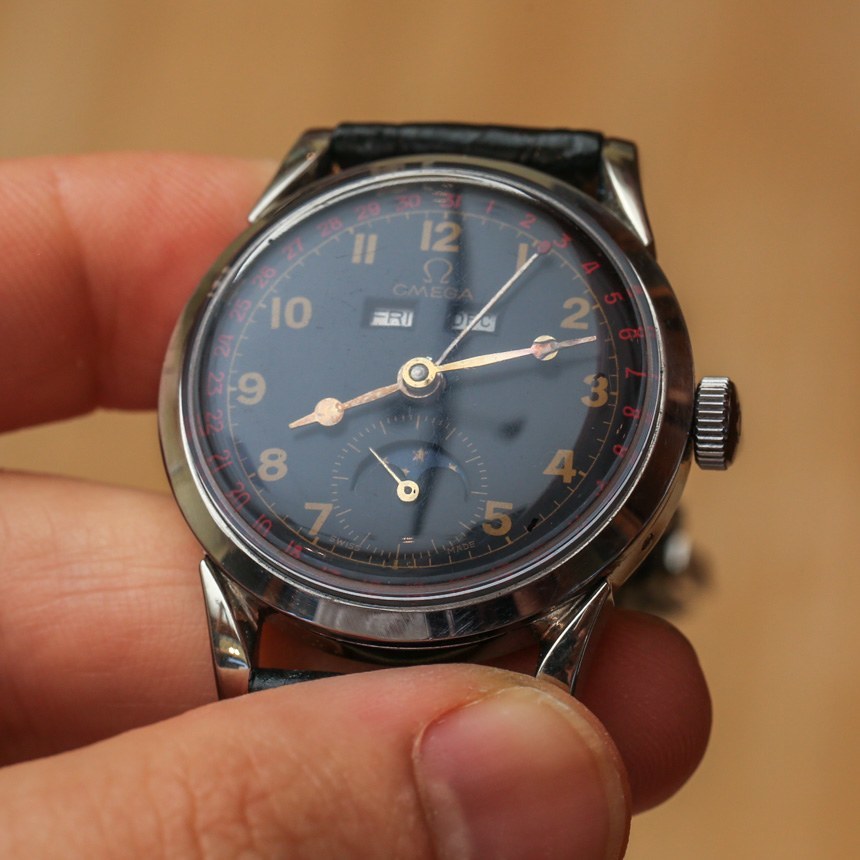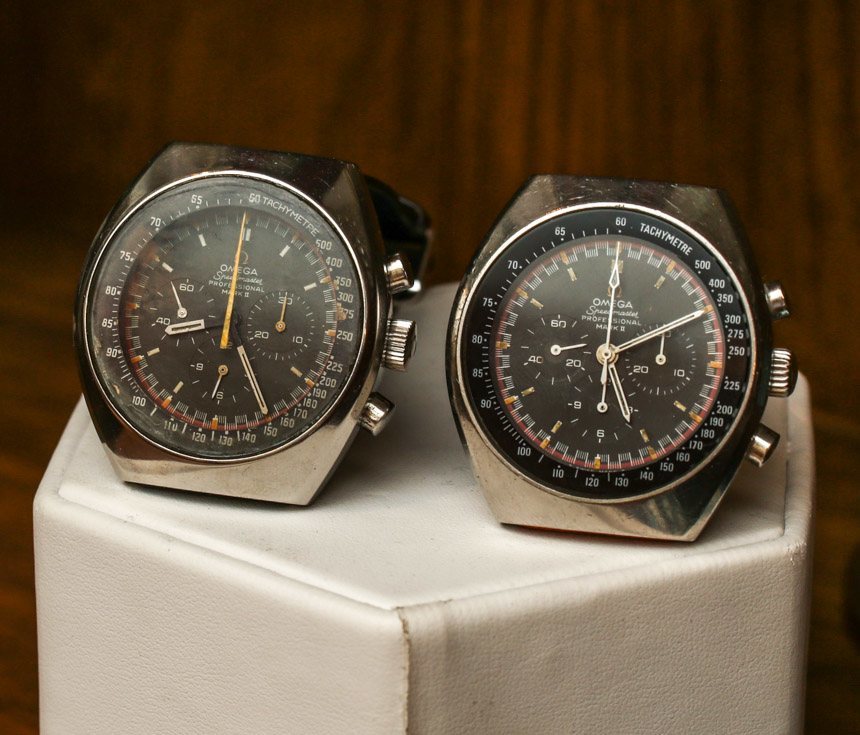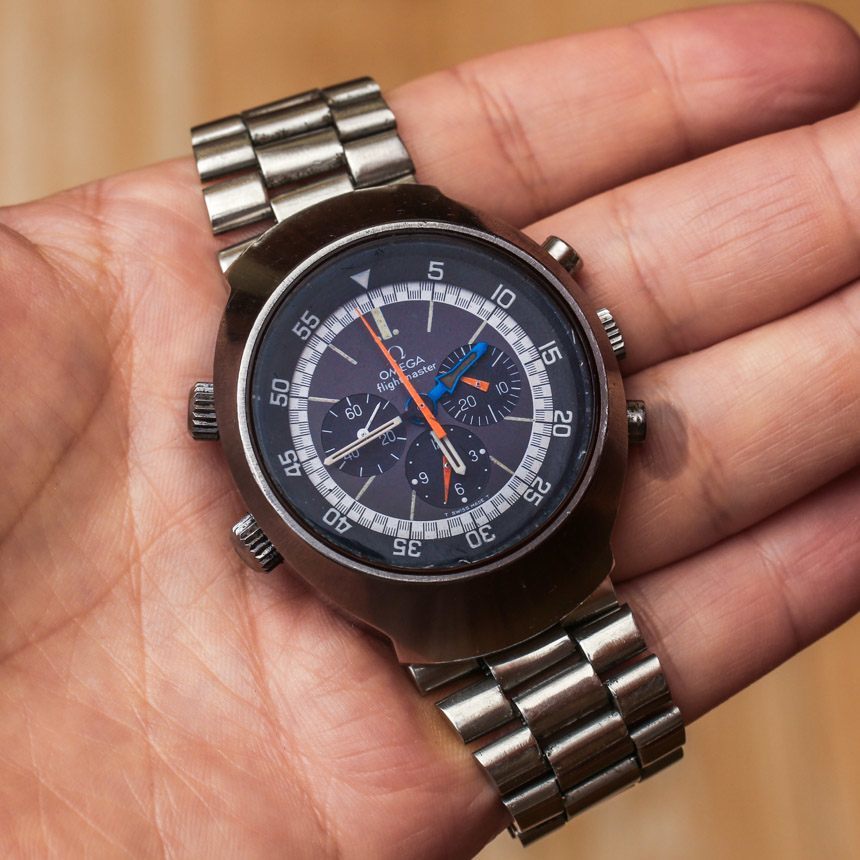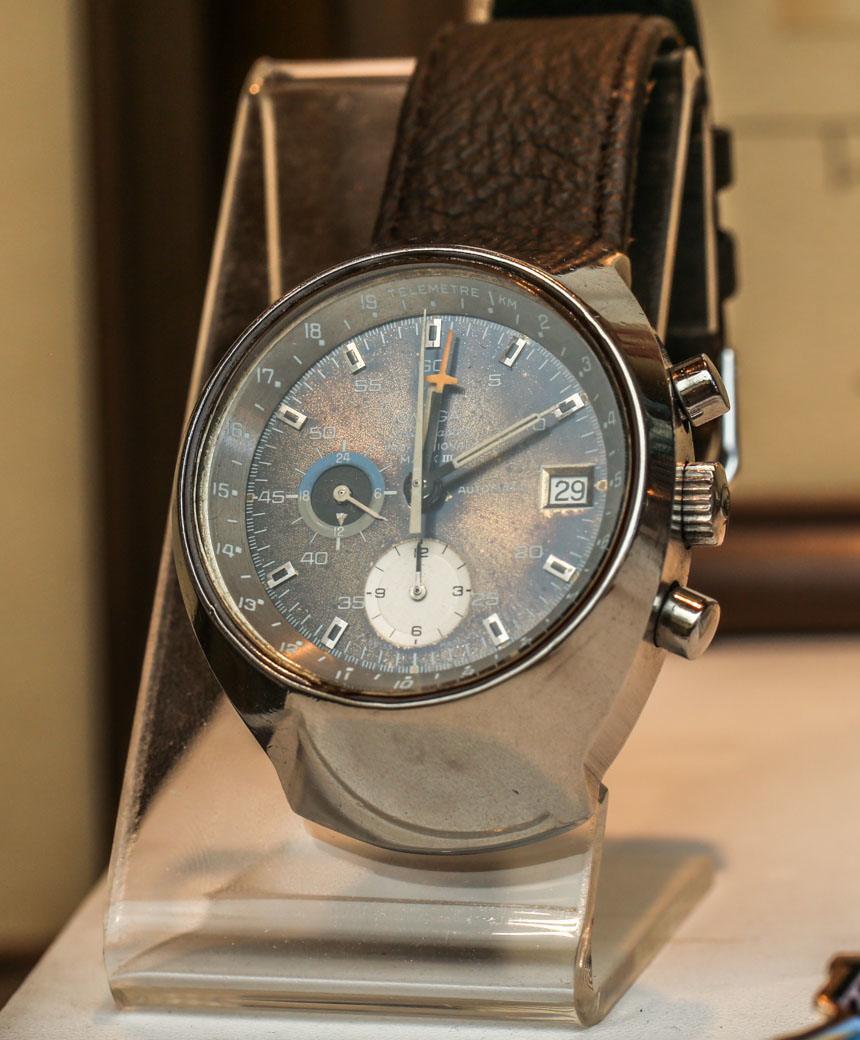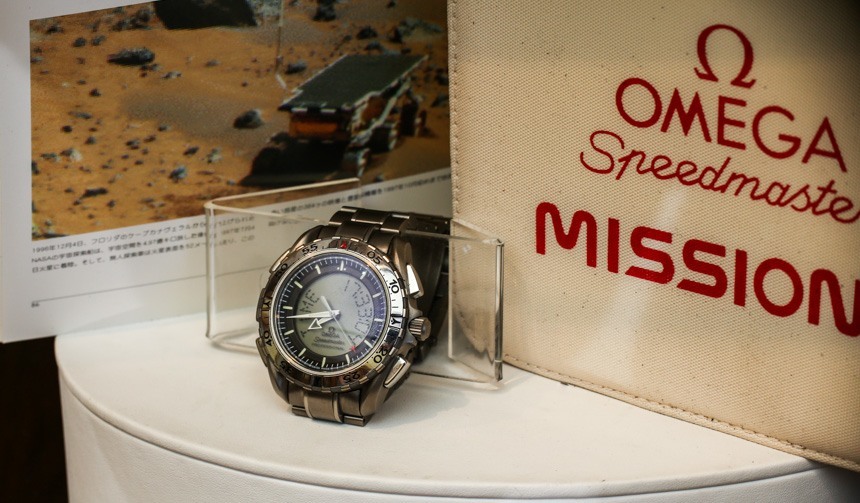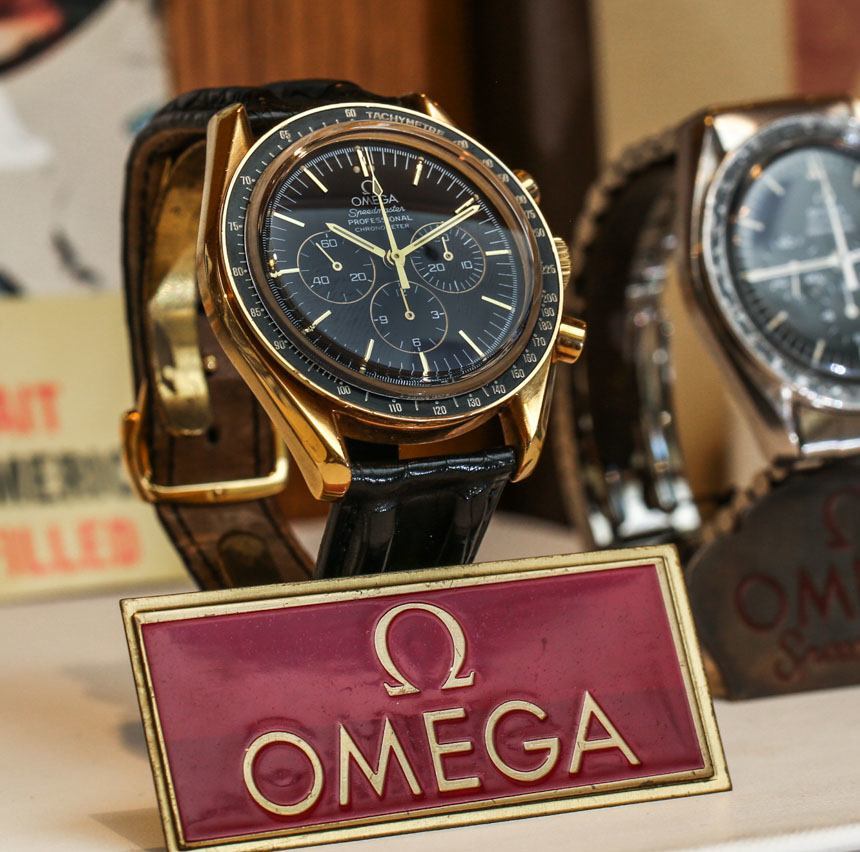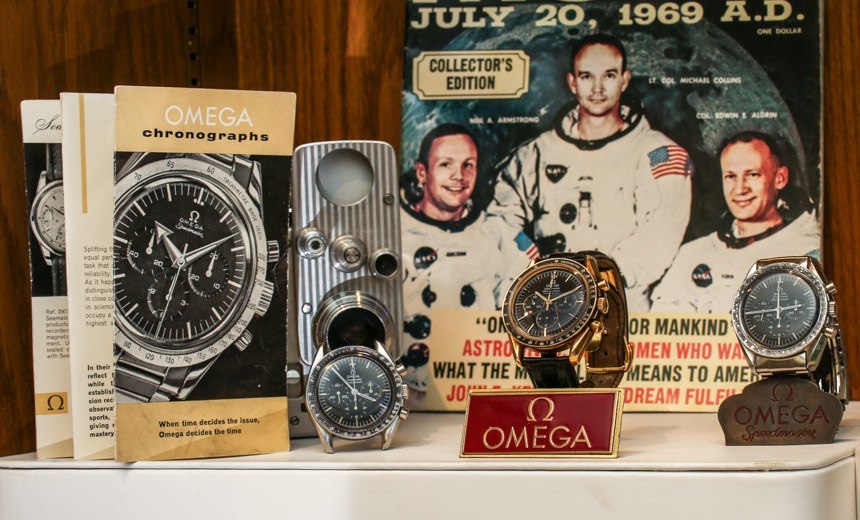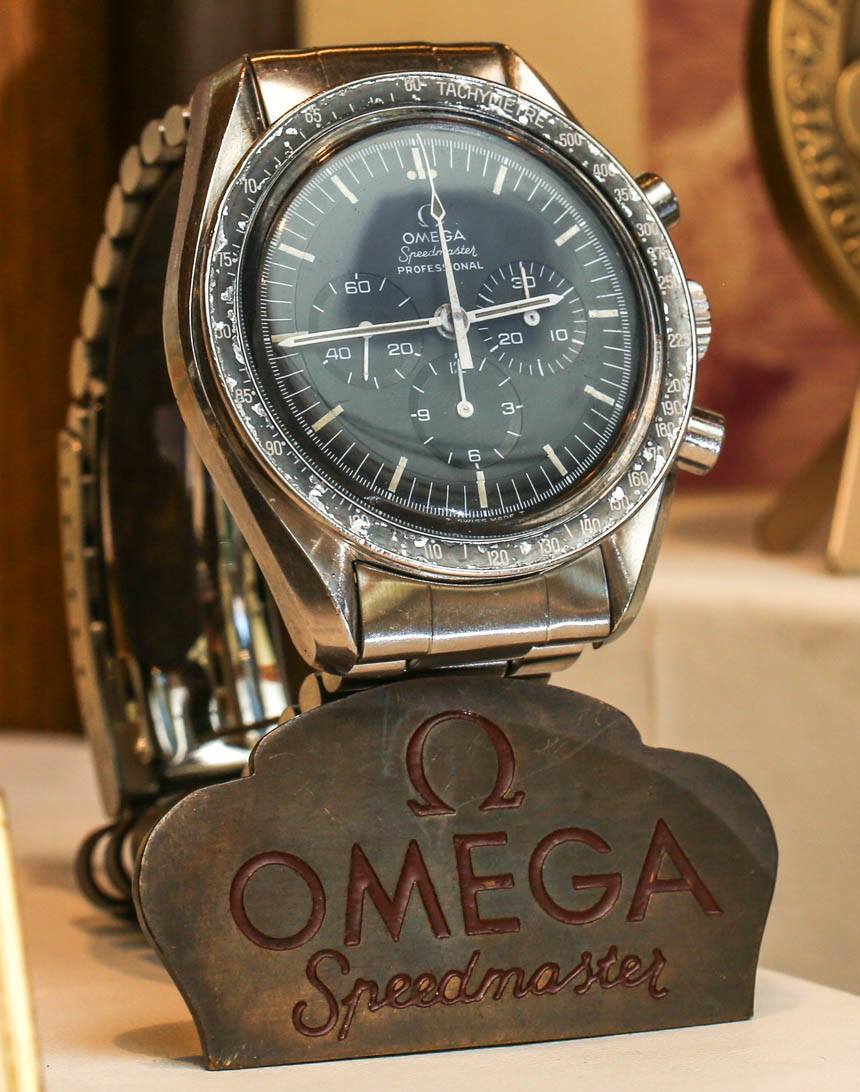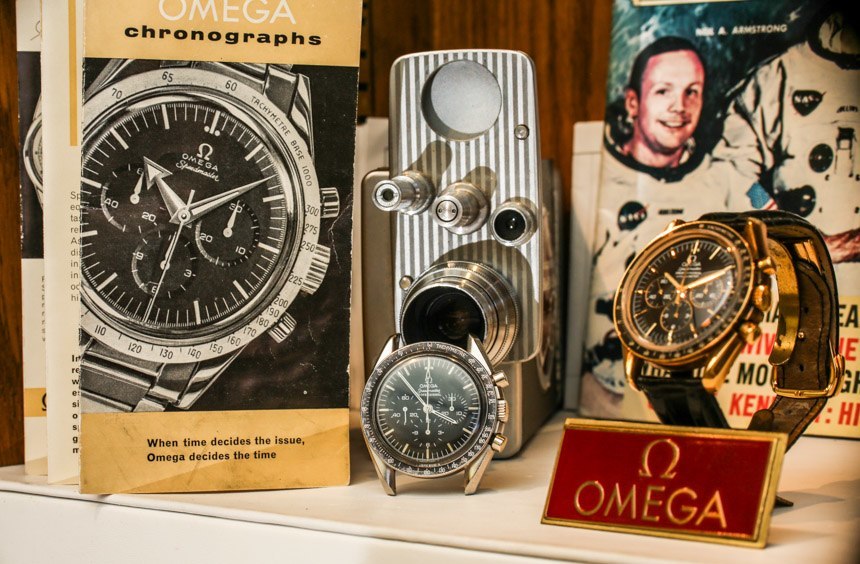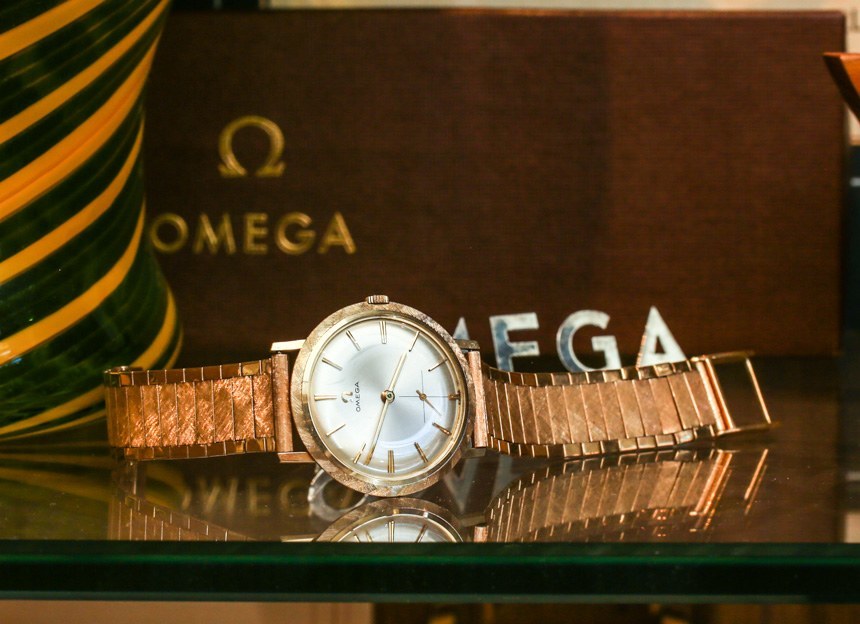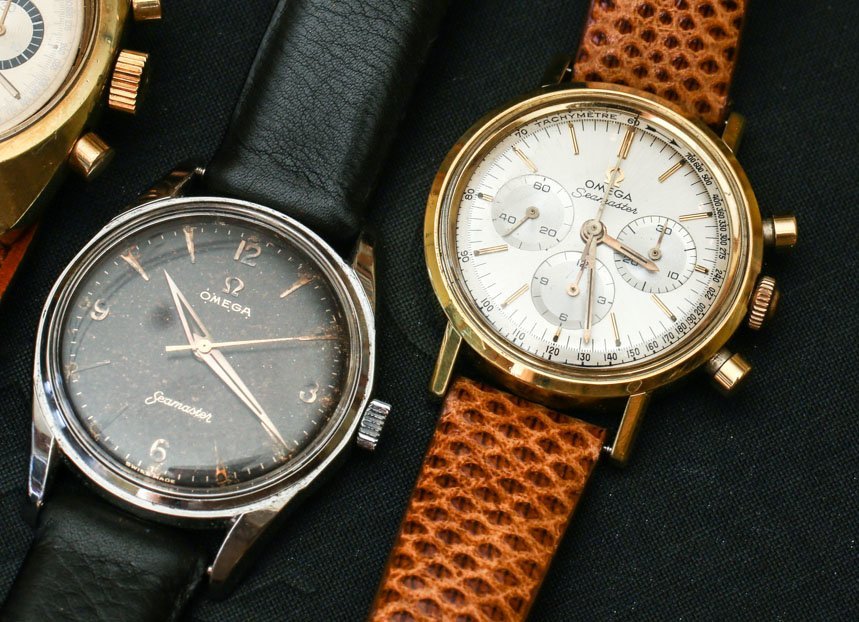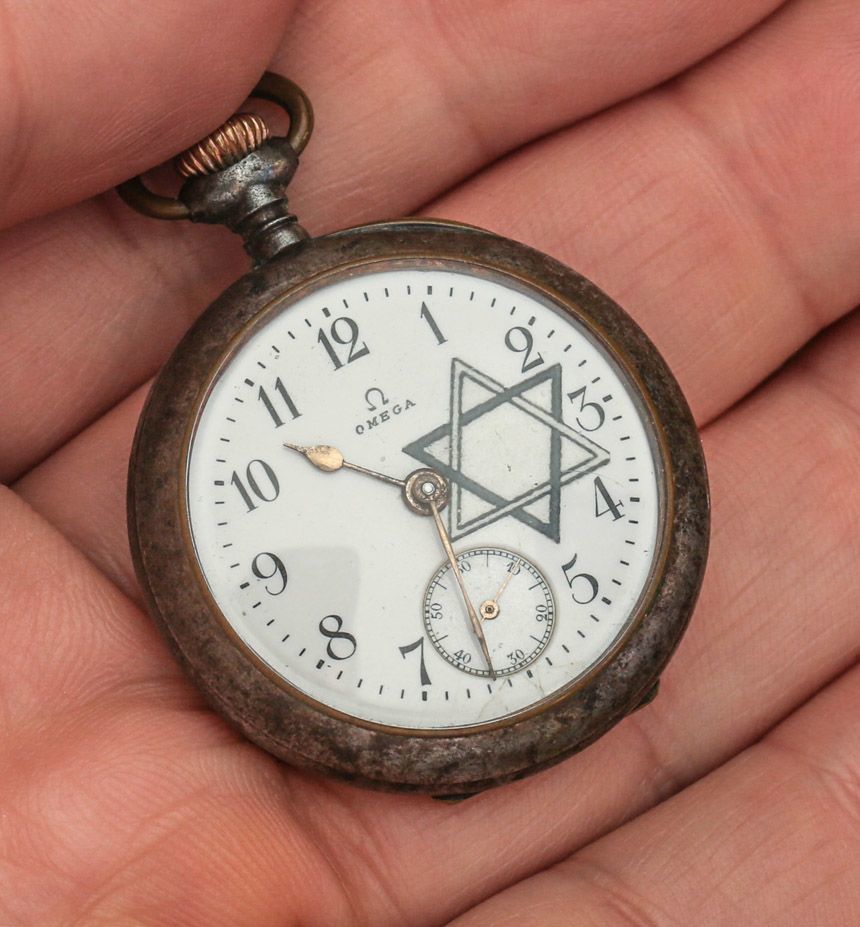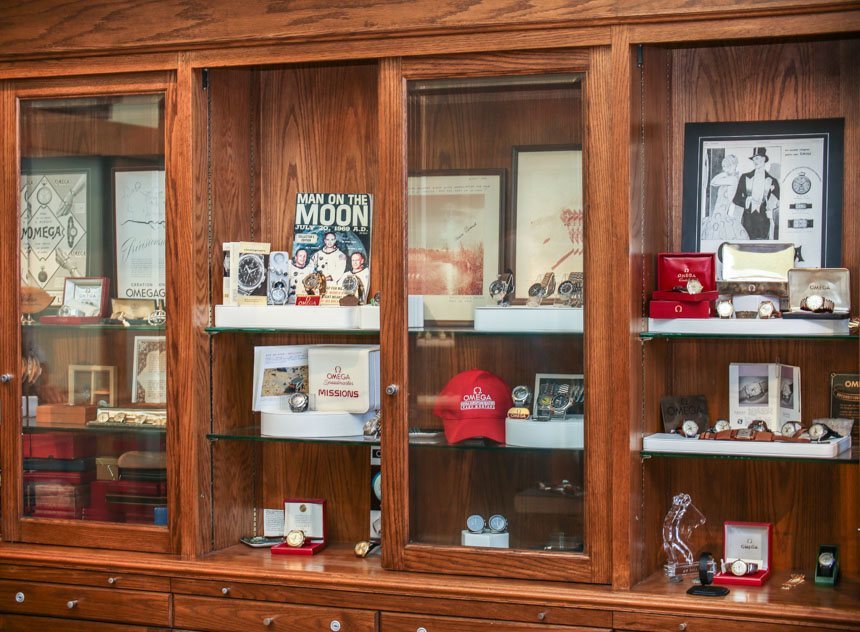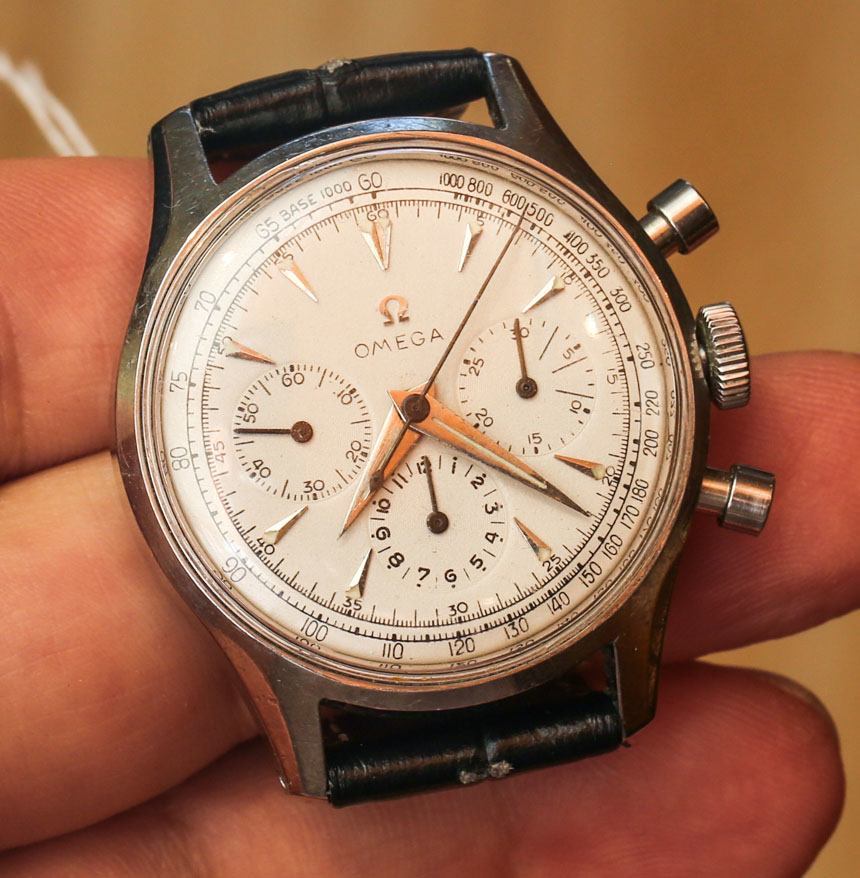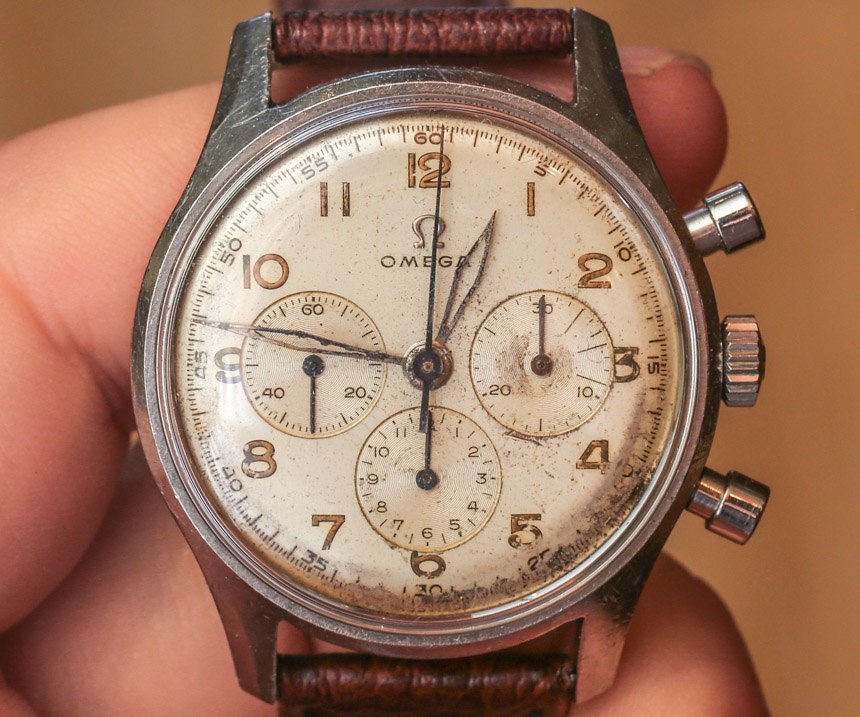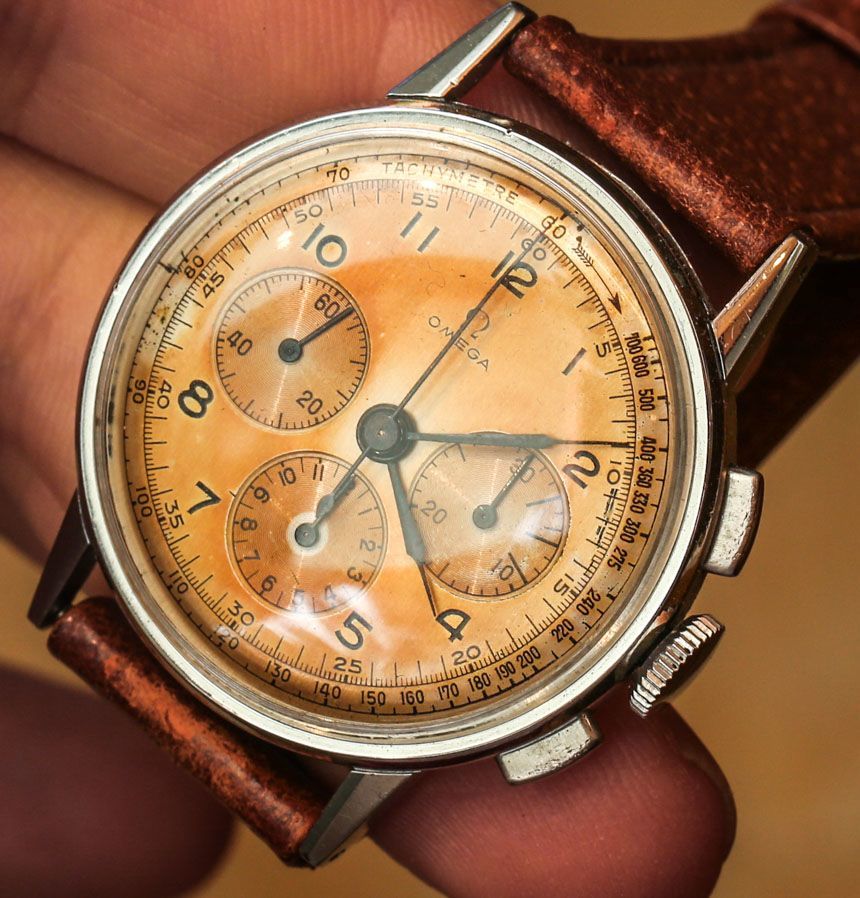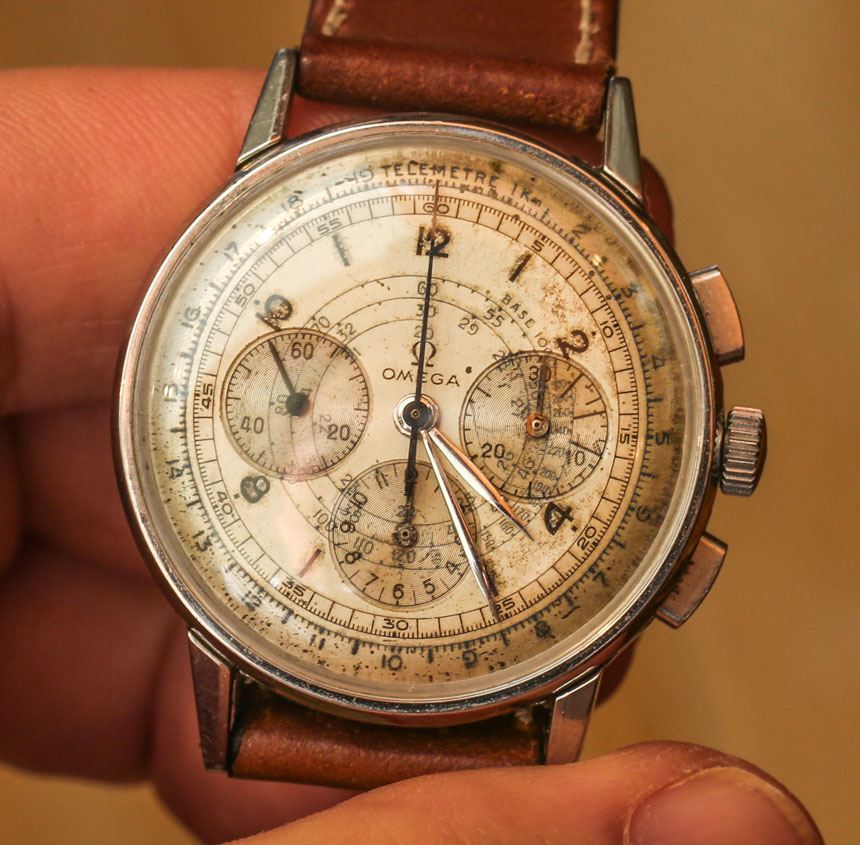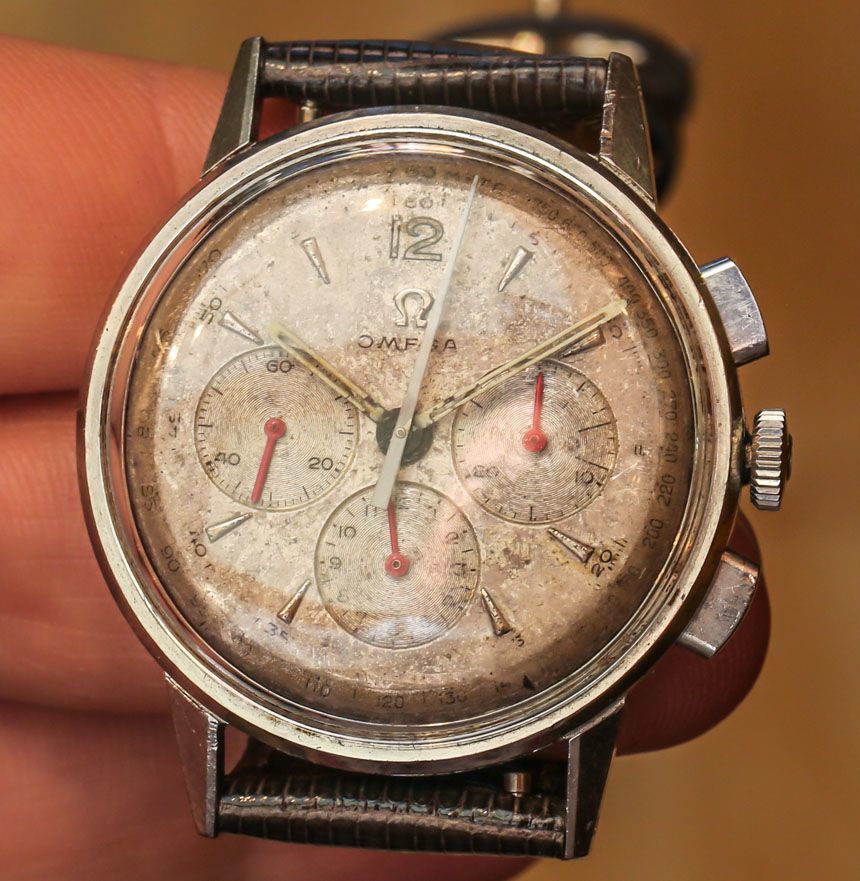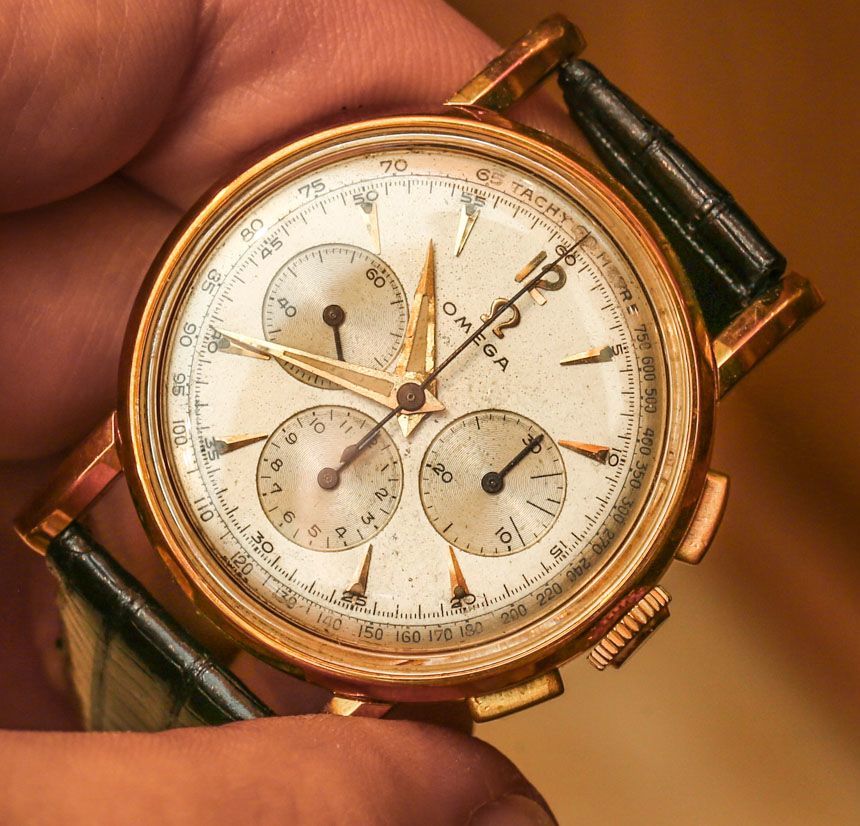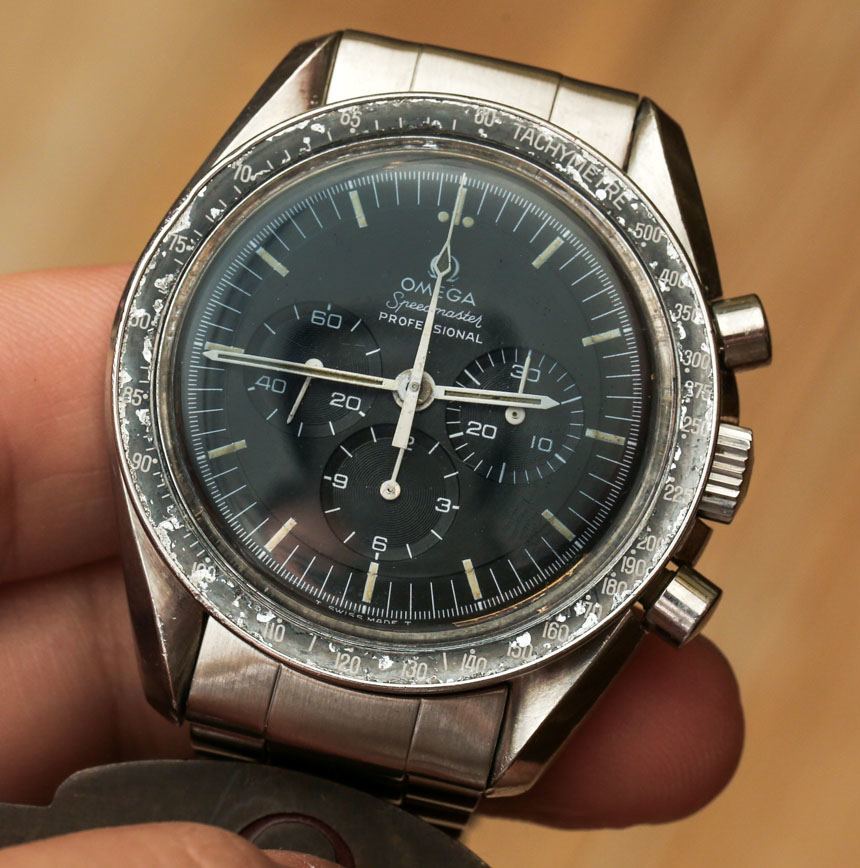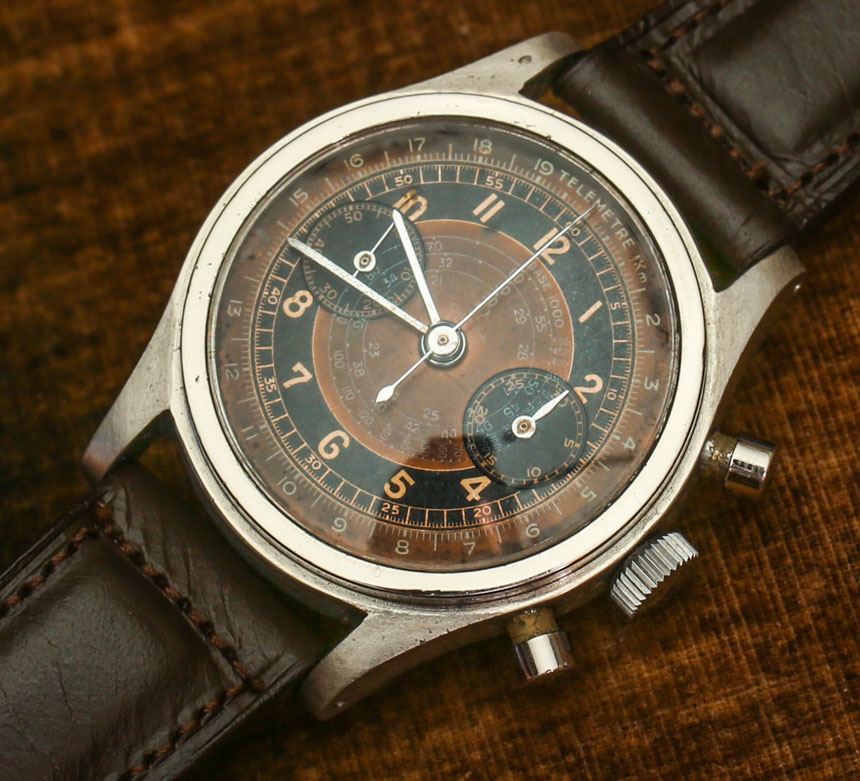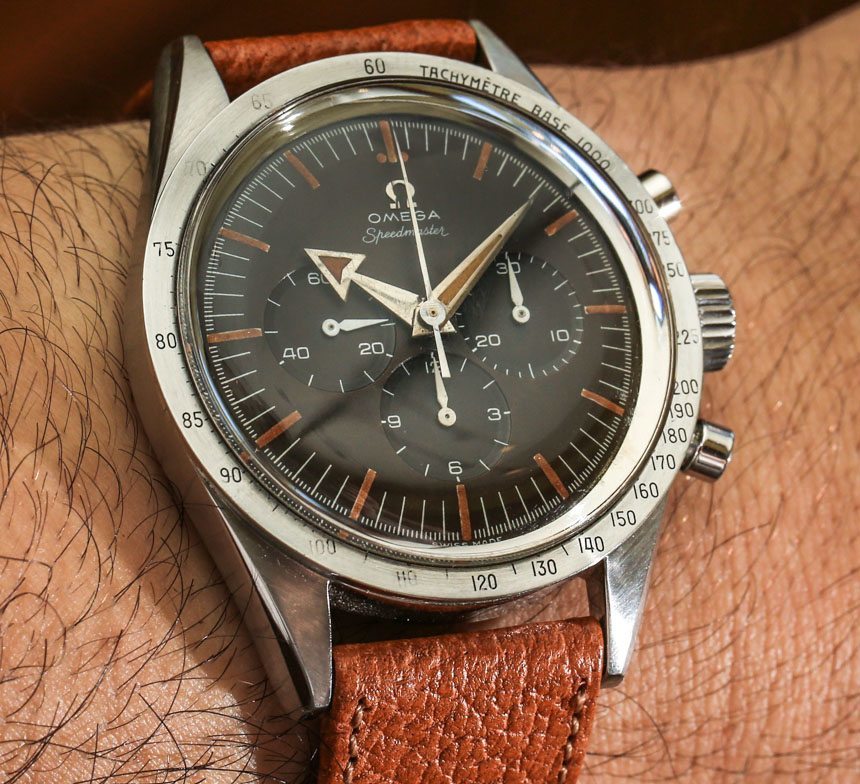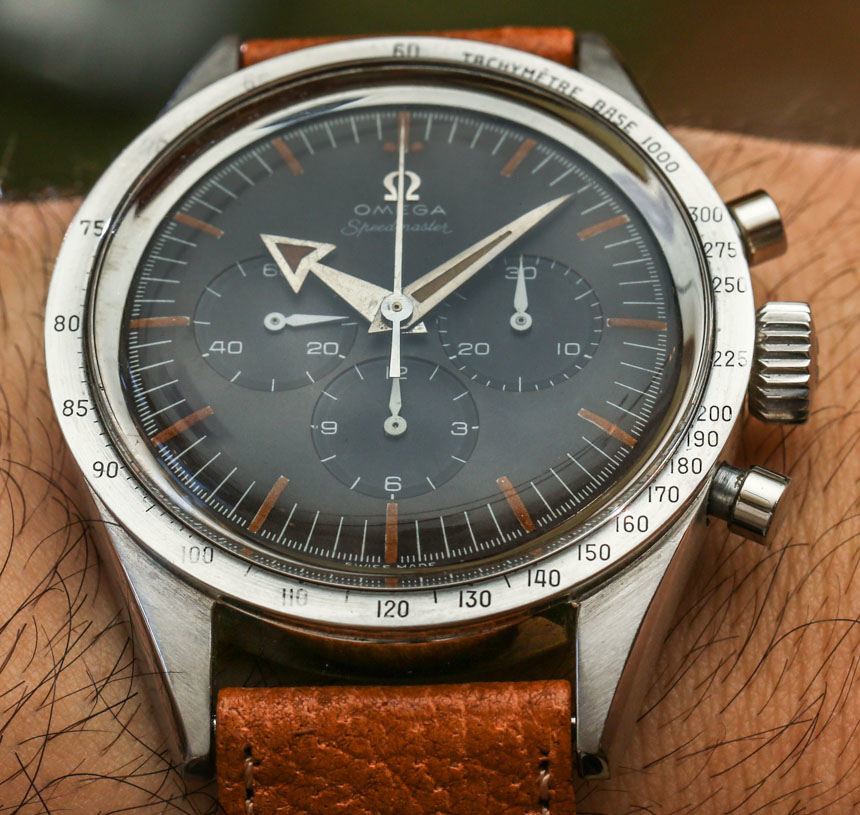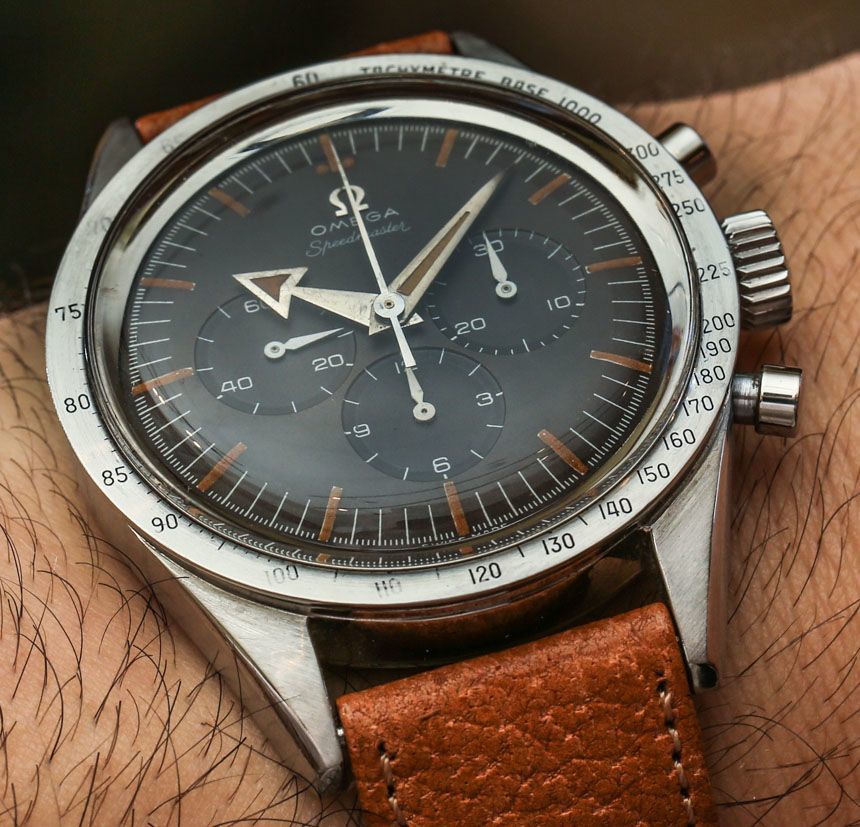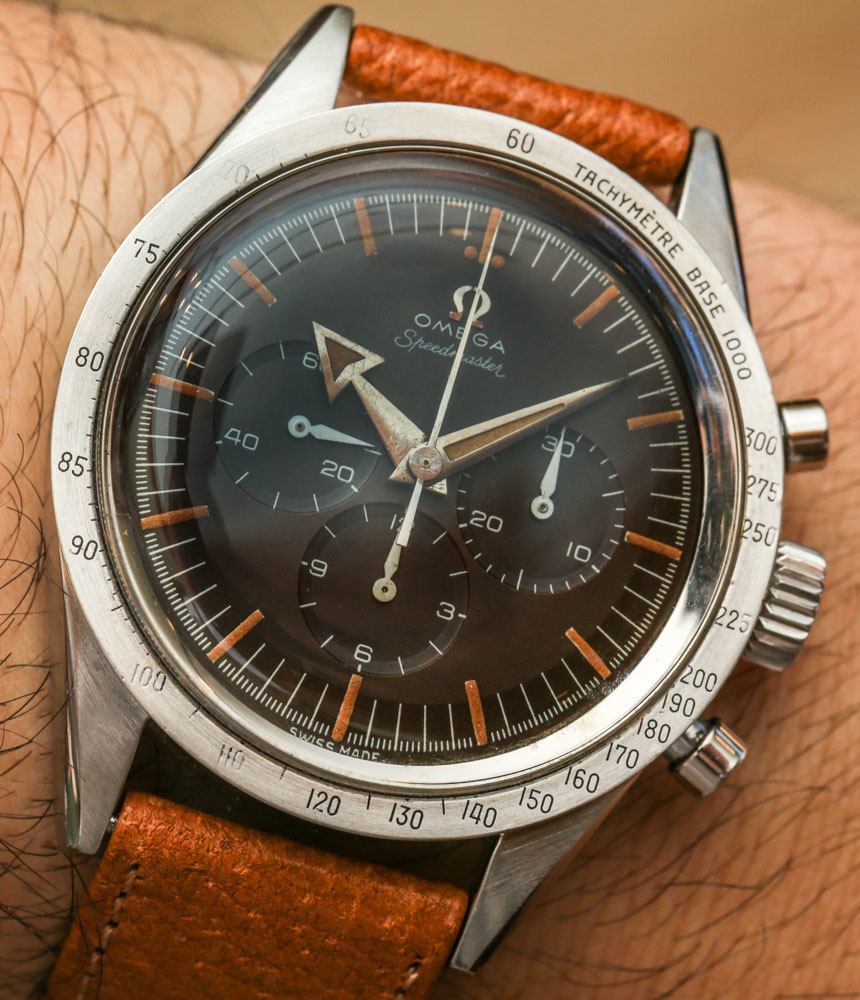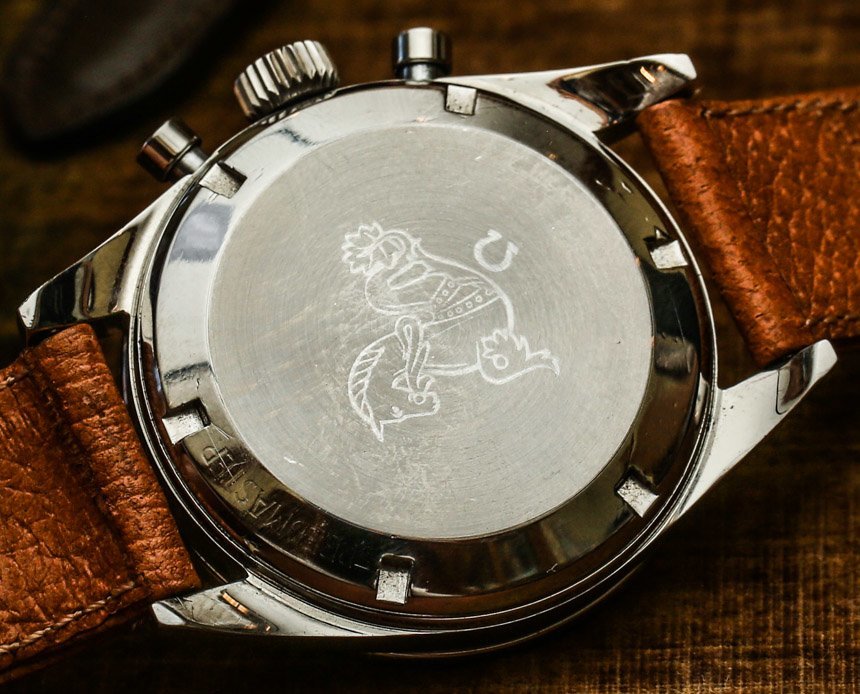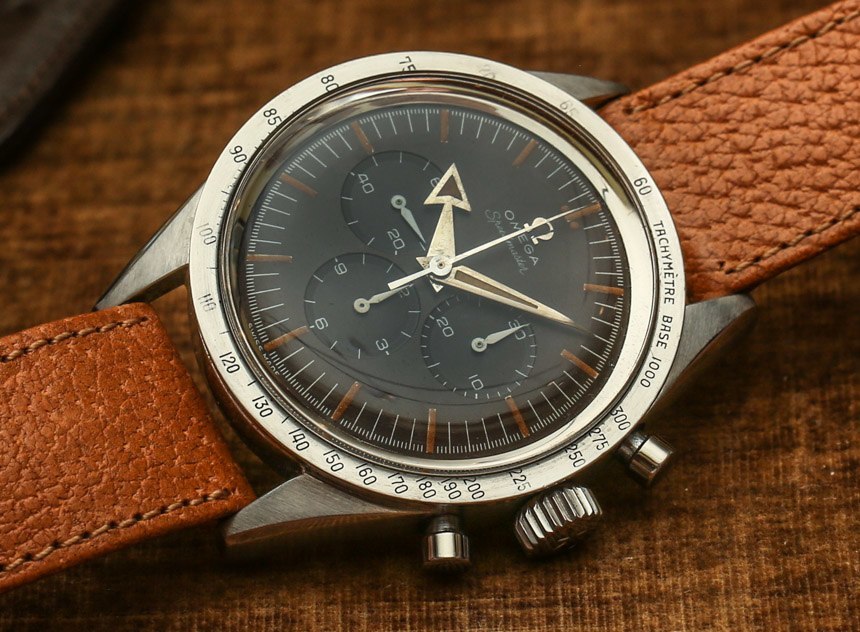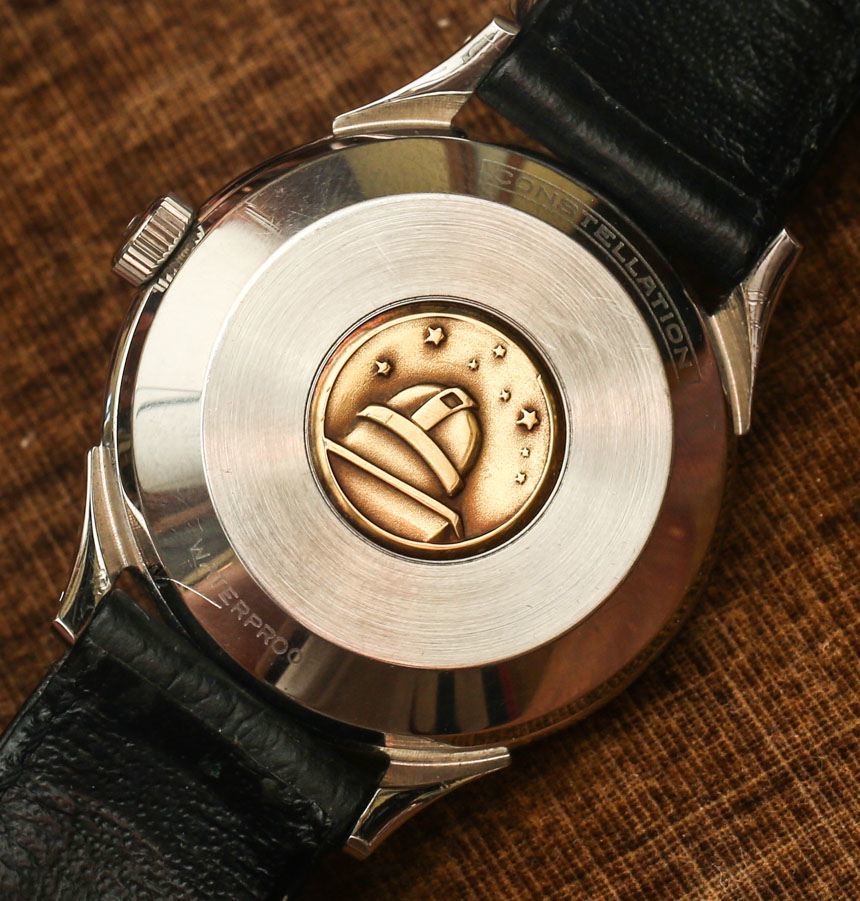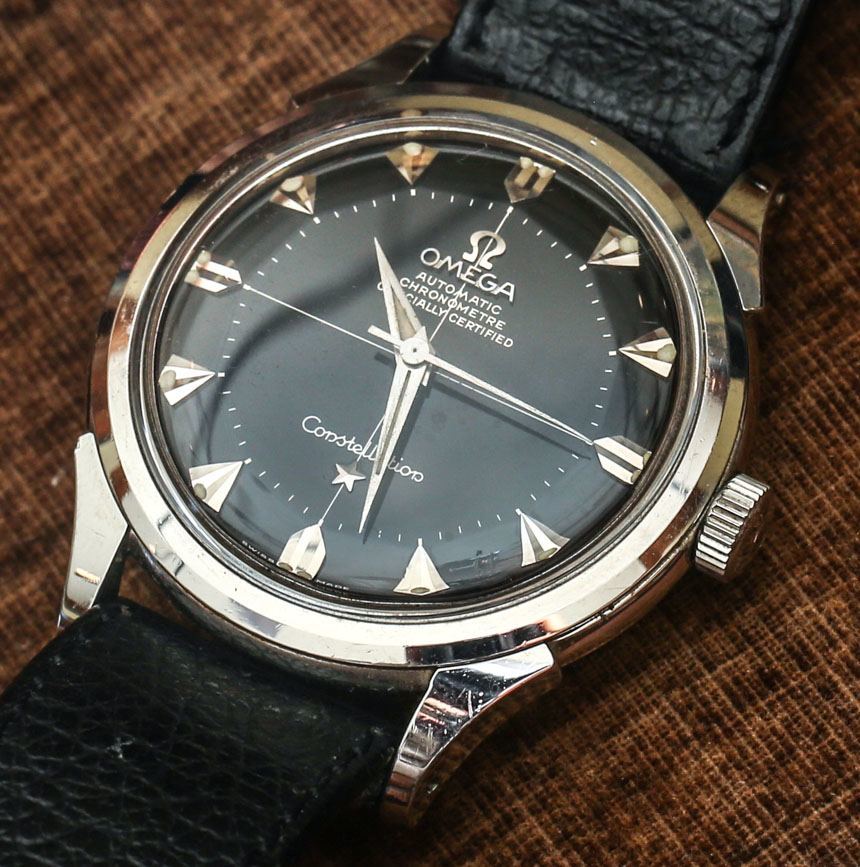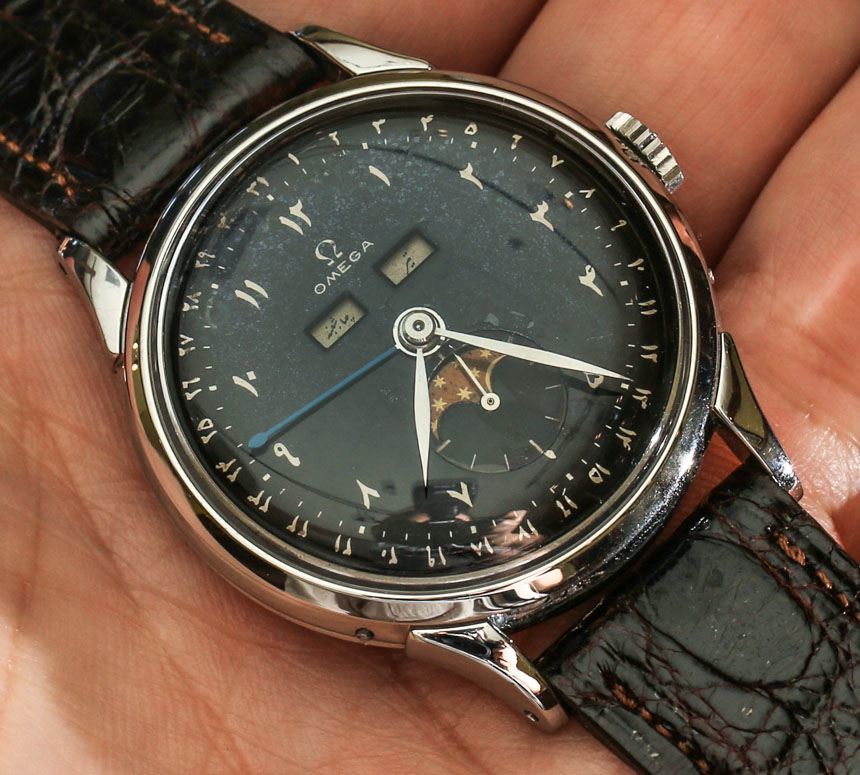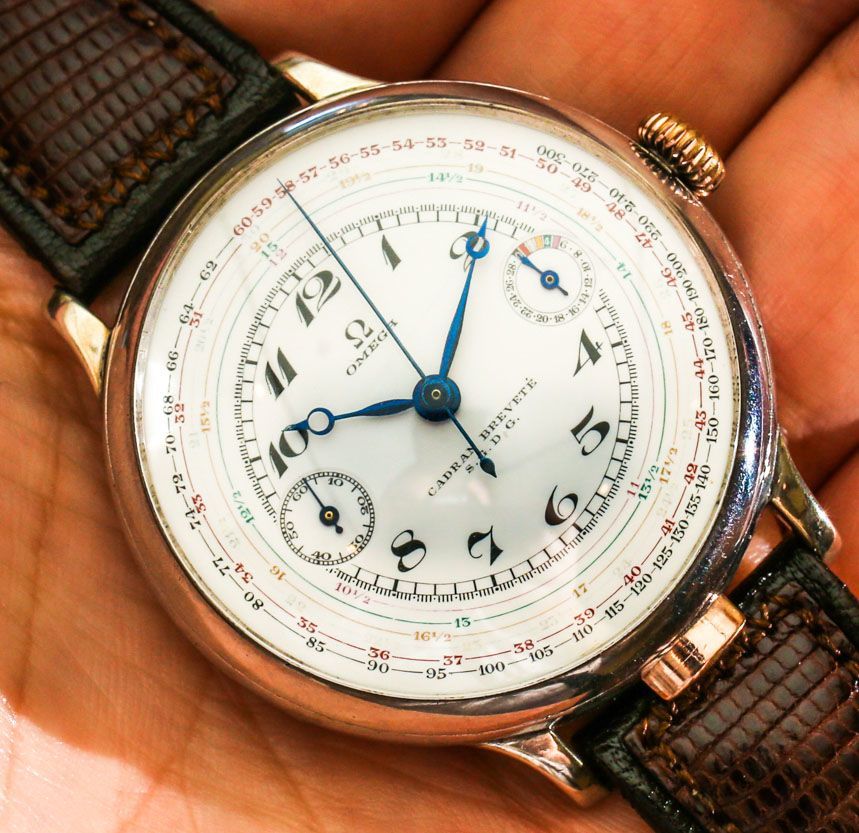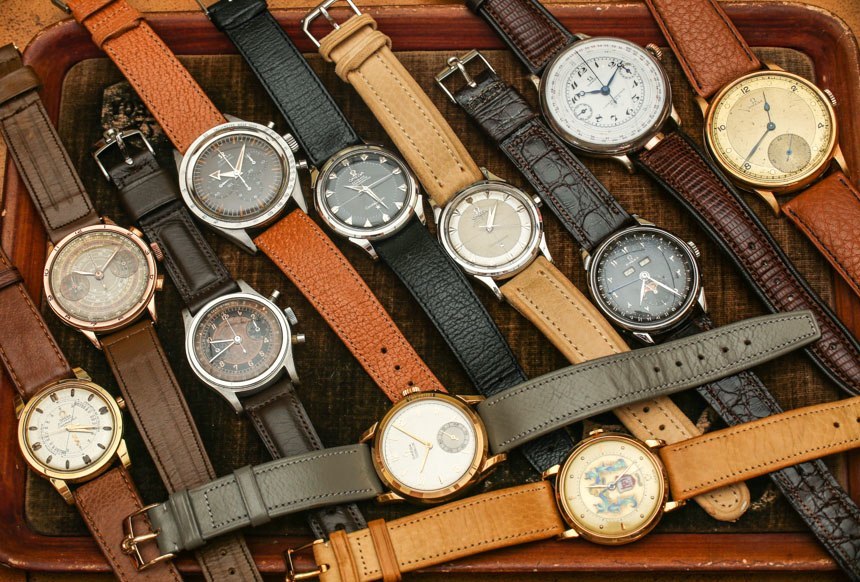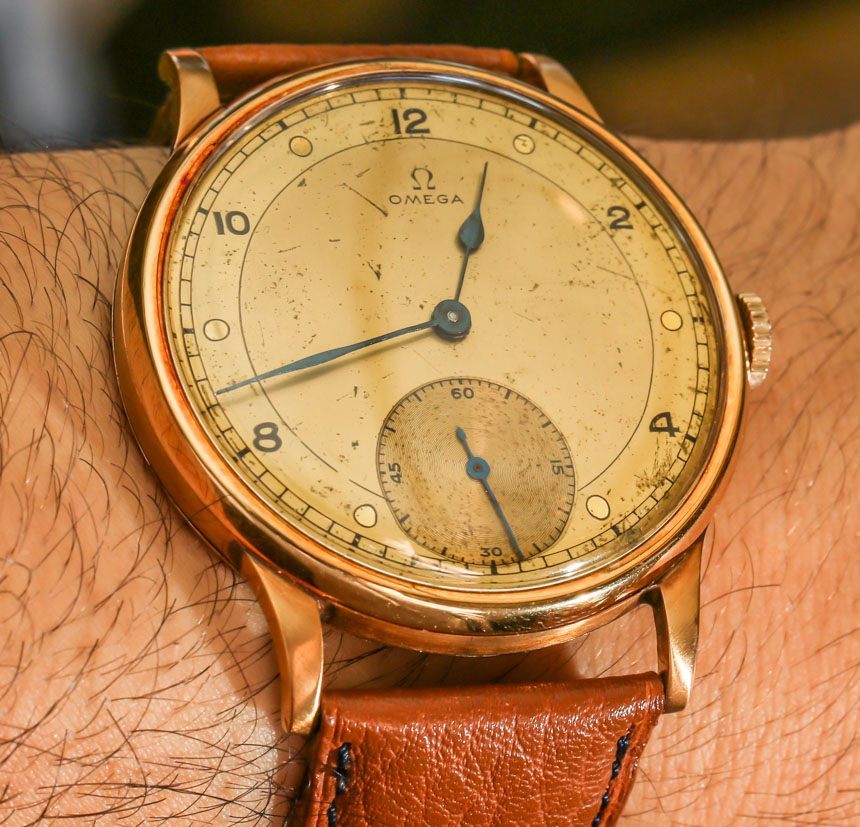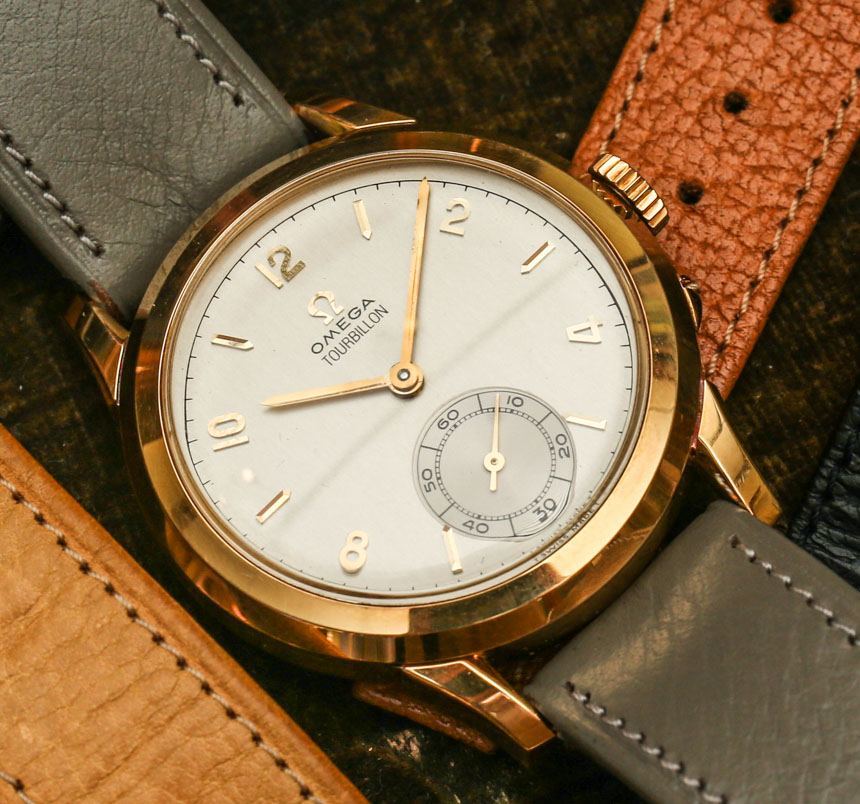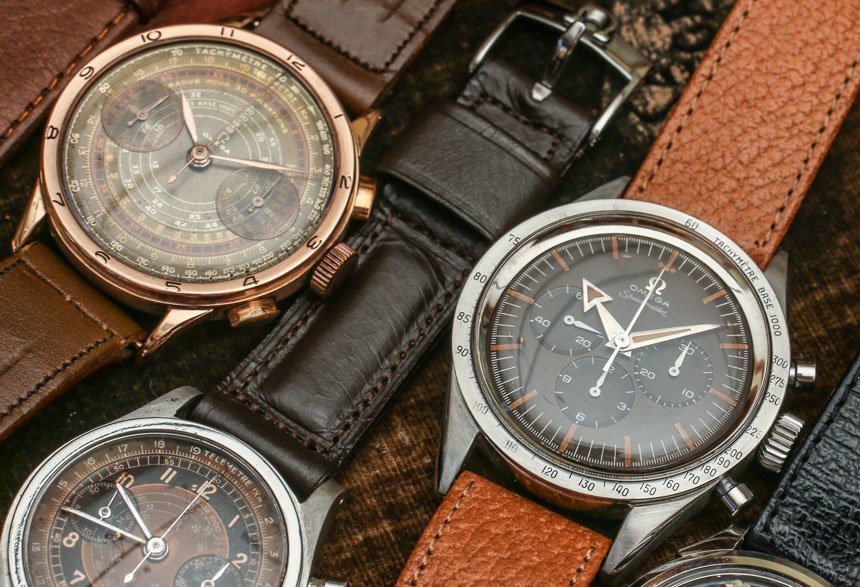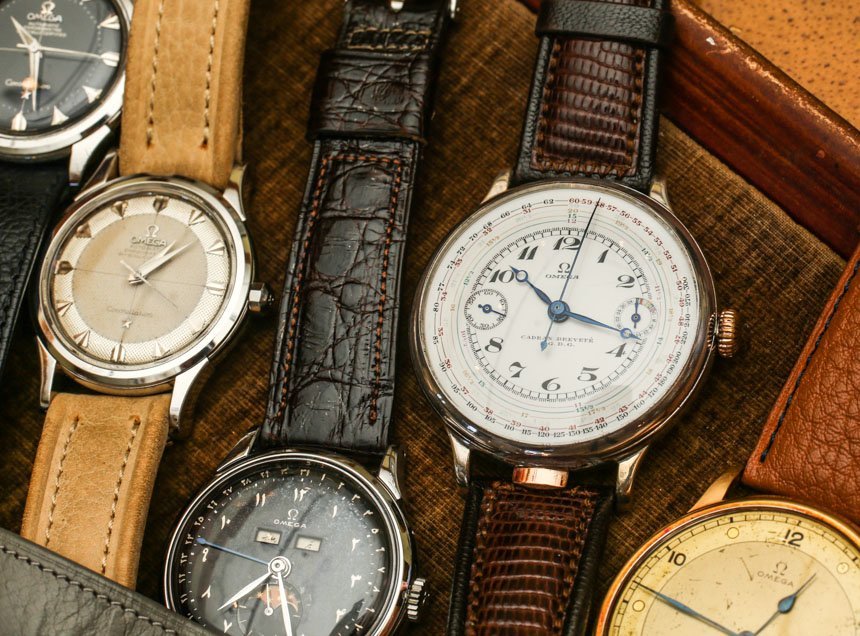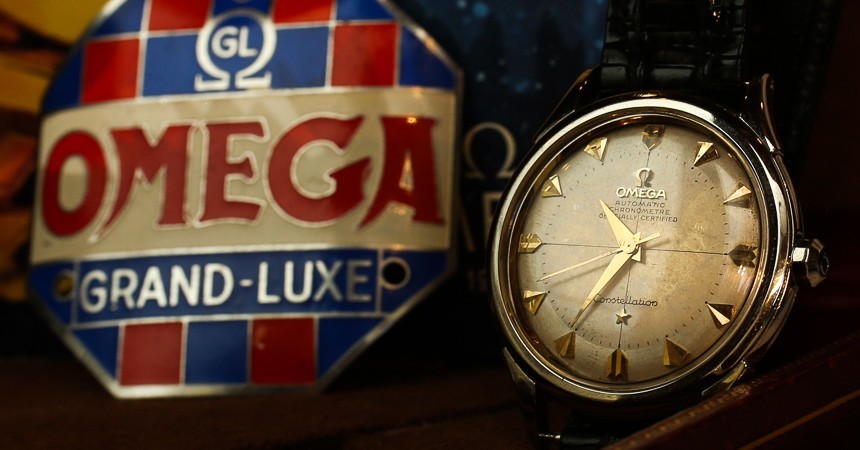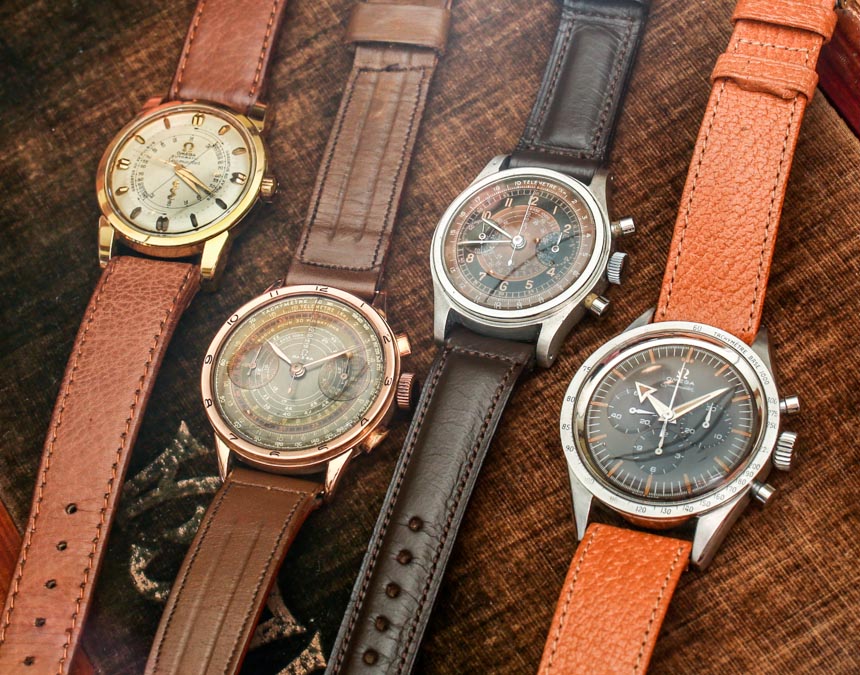 aBlogtoWatch: So, for a man that seems to have everything, what are your remaining Omega grails?
aBlogtoWatch: So, for a man that seems to have everything, what are your remaining Omega grails?
JK: I think my collection of the chronographs from the ’30s and ’40s isn’t complete yet. You talk to any collector: even if you think you have everything, there are still going to be those pieces you’re looking for, that you want for that collection. If I see something that’s interesting, that has an amazing dial, in beautiful condition – I buy it.
aBlogtoWatch: When you’re out there collecting and a great non-Omega piece pops up, are you ever tempted to acquire it?
JK: It happened, but I learned not to jump any more. Every time I did that, I made a mistake because I simply don’t have the knowledge and expertise about the other timepieces. If I stick to what I know, I’m much happier. For someone who wants to start a watch collection, it’s good to specialize in that brand. Don’t go out and grab whatever – get to know the brand.
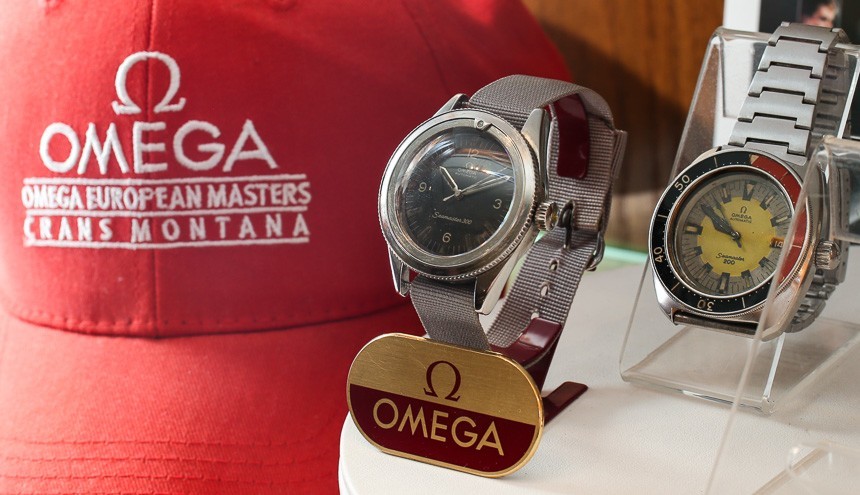
aBlogtoWatch: What is about watches in general that really speaks to you?
JK: I like looking at the mechanism. How complicated is it? How hard was it to put together? It’s like meditation for me – looking at the watches, winding them. I enjoy the machine aspect: to me, a watch that works with a battery has become a computer – I’m not really a fan of that. The kids that come to the store call the movement the “engine.” I like to look at the different engines and see how beautifully they work. But the story the watch carries is so valuable to me. I will travel to find that piece with a story, no matter where it is. We have watches from World War II, that came from the Holocaust. Look at this [he pulls out an early twentieth-century Omega pocket watch with a prominent Star of David on the dial].
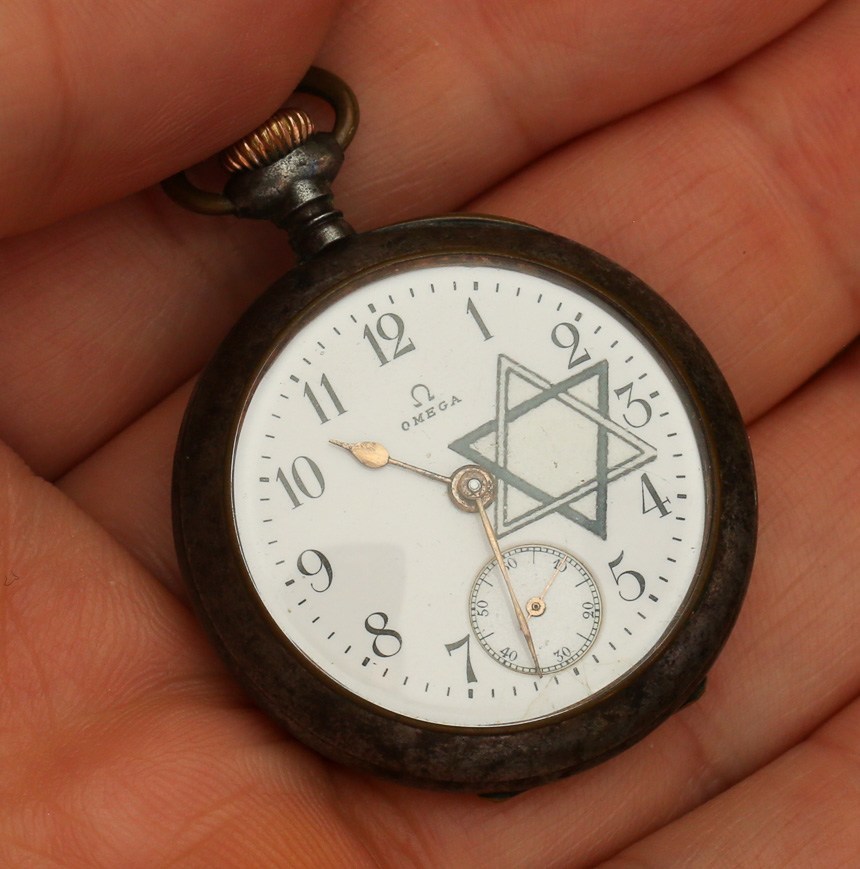
I purchased this watch from a Holocaust survivor: he said he found it in one of the concentration camps, and he took it and carried it with him for a long time. Can I put a “value” on this piece? No way. When I bought this, I started crying. It’s just a pocket watch, but the story… I still get goosebumps when I talk about it. It’s not just a machine that tells time any more. It takes you to a different era, a different place; it carries history. We’re actually talking about donating this piece to a museum in Israel.
aBlogtoWatch: What did you feel when you finally made that first trip to Switzerland – to the birthplace of your obsession?
JK: If you don’t grow up in the U.S., you’re limited to what’s available. Imagine being in Tehran, where maybe there are just four or five places that carry watches, and every day after school you go to them just to see what’s available. I never got tired of looking at watches. You know how many times I got kicked out of the stores? So many times, but I’d still go back. But some of guys who owned the store just understood I was there because I loved watches. Then, fourteen or fifteen years ago, I went to Geneva; from there, we took the train to Bienne and the Omega Museum. I met Mr. Richon, the head of the museum, and it was heaven! I was there close to eight or nine hours, without eating anything, just taking pictures, archiving them for myself. Mr. Richon introduced me to a few collectors that I’d do business with. There are some special people in the world, who are truly unique; Mr. Richon is one of those people.
aBlogtoWatch: You’ve been collecting for two decades, and have had the store for six years. What trends during that period have you seen in vintage Omega collecting?
JK: Prices are going up crazy! The market for pocket watches is very difficult: people think just because a pocket watch is old, it has a great value. Constellations with the arrow marker and pie pan dial, Speedmasters, Triple Calendars, chronographs from the ’30s and ’40s – if they’re in good condition, and original, prices are rising. And it may be because of the Internet, but now I see more people collecting Omega than ever.
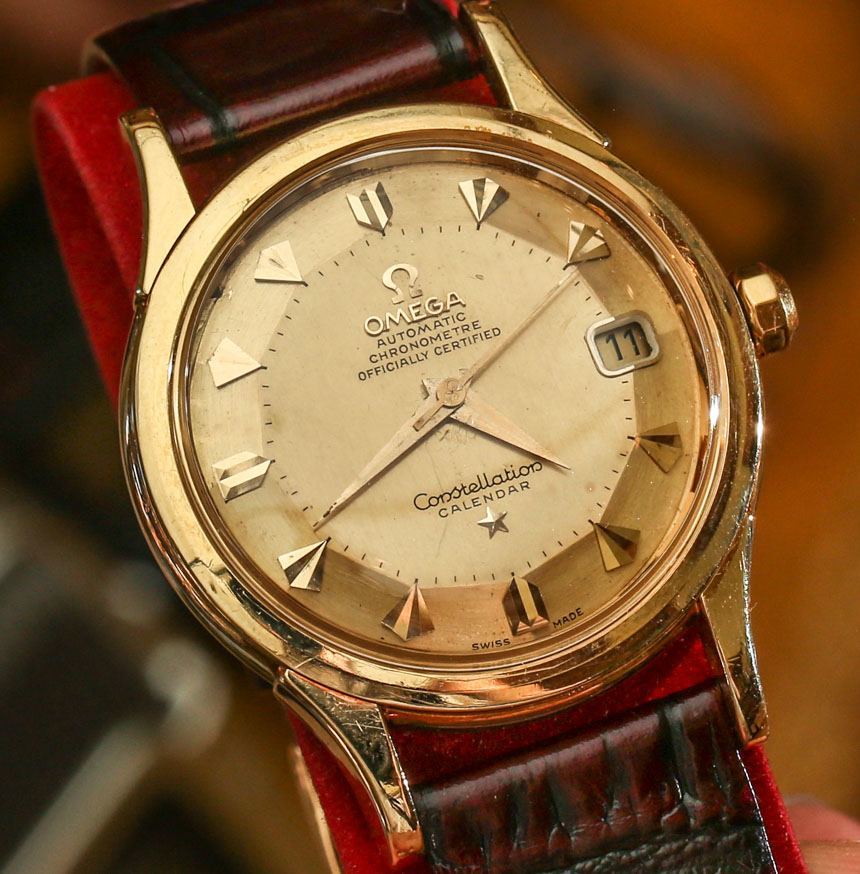
aBlogtoWatch: How did the Internet affect your own collecting interests, and the store’s activities?
JK: The Internet was a fantastic tool for everybody. All of a sudden you started seeing beautiful pieces you didn’t even know existed. It just made things easier all around.
aBlogtoWatch: The Internet is also largely responsible for skyrocketing price bubbles, too.
JK: Oh, of course – but that’s a good thing! If you’ve been a collector for twenty years, of course [rising prices] are pretty good for you! [laughs] A $200 Constellation turning into a $10,000 watch? Oh, yeah! Being able to bid online at auction houses is another good thing the Internet brought. Before I’d have to fly to Switzerland or Germany for my collectors – they don’t want to be there. Collectors don’t want to be known to anyone; it’s a very secretive community, so I became the middleman. But if you love the watch, that’s where the value is. It’s never about the dollar amount.
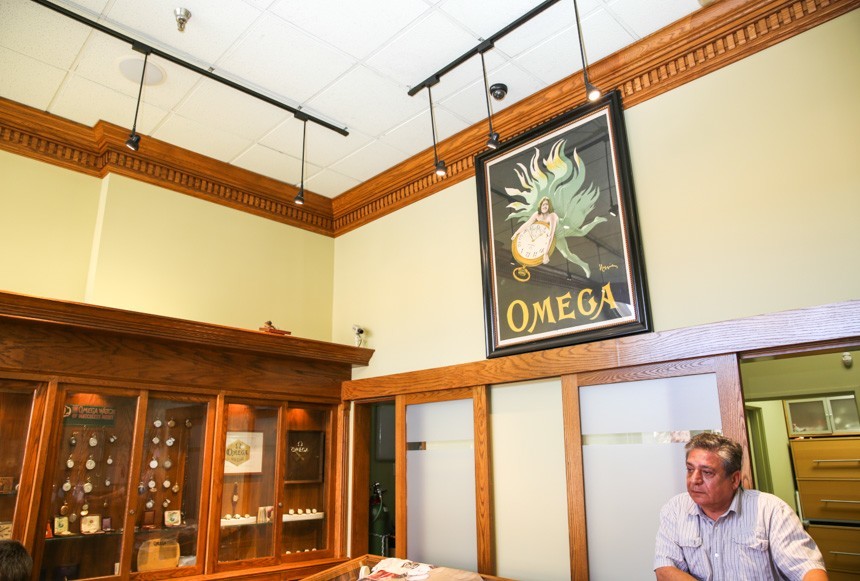
aBlogtoWatch: I love that you walk in here, and it’s not just Omega watches, but also ashtrays, hats, pens… Jackmond really represents the whole world of Omega in a way that only a conventional brick-and-mortar store would be able to.
JK: It’s a passion. This poster [he points to a large framed antique Omega poster mounted at the back of the space, seen in the photo above] is extremely rare. It’s from the 1900s, it’s original, and it’s signed – someone actually appraised it for $80,000. Omega photographed it and put it into Omega: A Journey through Time. [He takes out a watch with an extraordinary large case.] This piece I bought fifteen years ago: it’s vintage, but 44 mm in diameter. I’ve never seen anything like this before. Usually, these days, you see these big watches that are old pocket watches that have been converted into a wristwatch. This is only the second Omega piece I’ve ever seen from that time that’s this big size without originally being a pocket watch. It’s not for sale. And here’s a chronograph from the 1920s, in steel, with the pusher at six o’ clock.
aBlogtoWatch: I’ve never seen anything like it. How rare is it?
JK: [laughs] I traveled quite a lot to find this piece. And here’s a Seamaster with a special “doctor’s dial.” This watch was actually made for a very famous doctor in Germany. He used it as a pulsometer to take the pulse of his patients. It’s very unique; I have not seen anything like this before.
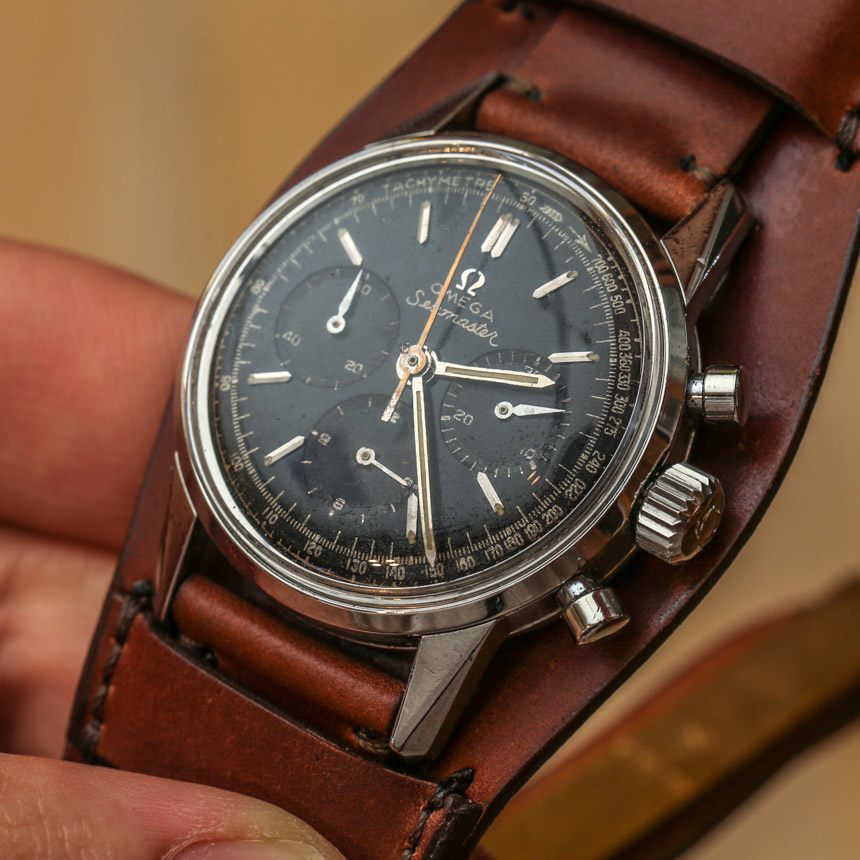
aBlogtoWatch: That this Seamaster was specially made for a customer speaks to the artisanal nature of that period in horological history. To order this watch, the doctor probably spoke to the guy that actually built and designed it!
JK: Oh, yes – beautiful. [He takes out another watch.] This is one of my favorites: a Constellation with black dial and arrowhead markers.
aBlogtoWatch: What amazes me about this piece is the rarity of black dials among vintage Omegas on the contemporary market – well, authentic ones, anyway. A lot of black dials you might find for sale today are often very shoddy, fake redials.
JK: Black dials are difficult to make, and hard to come by in very good condition. Usually, they’re rusted, but when you have a one in good condition, it adds a lot more value.
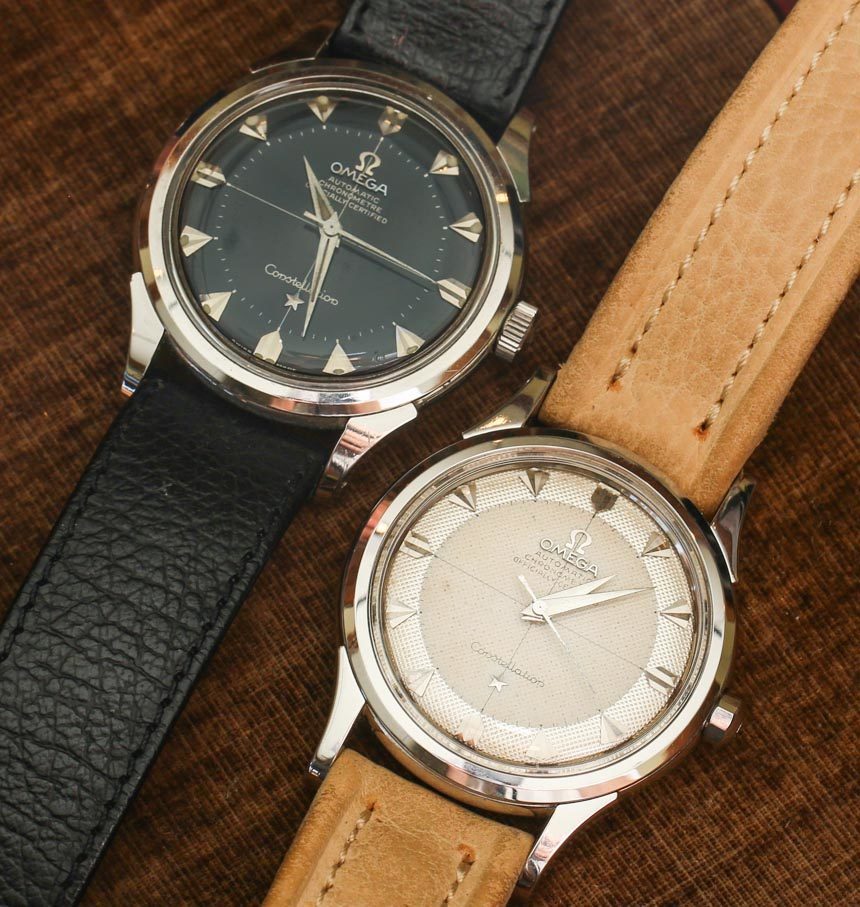
aBlogtoWatch: I think Omega remains somewhat unsung in terms of how exquisitely sublime many of their dials are in terms of color and finish.
JK: Exactly! As I’ve told you, the variation and quality of the Omega dials and cases is just… beyond. I have a ’50s Constellation with arrowhead markers in platinum. Most Constellations you see are steel, gold, or two-tone; finding one in platinum, though, is really difficult, if not impossible. And I have some very rare Omegas that have just superlative cloisonné dials. Just beautiful.
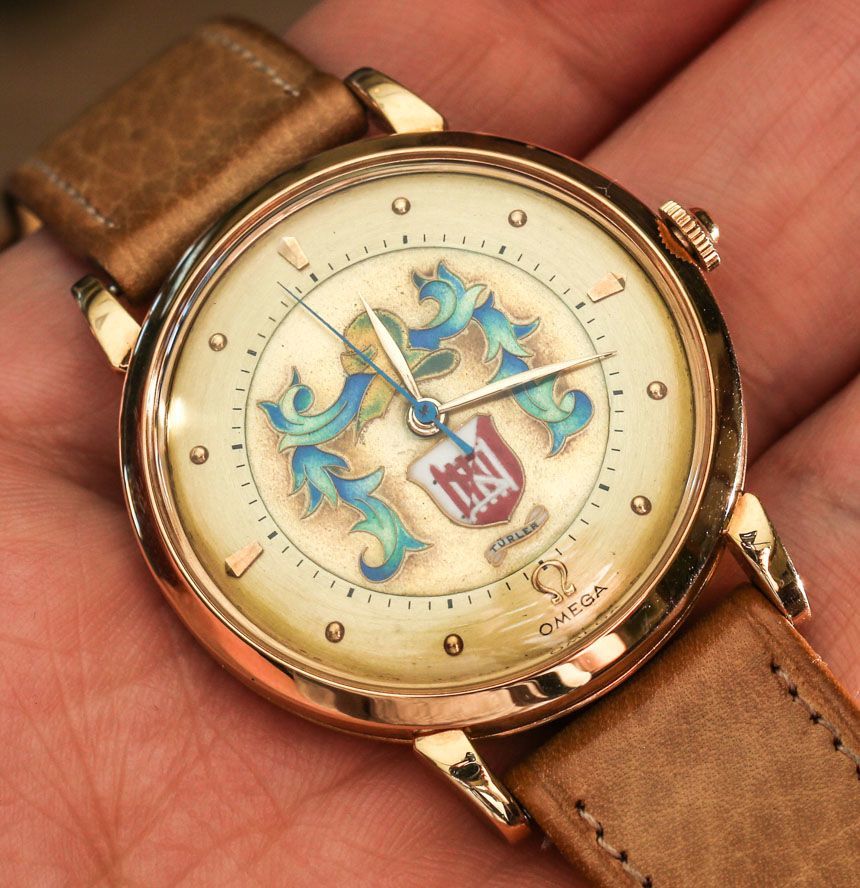
aBlogtoWatch: To you, what are Omega’s greatest eras?
JK: The ’20s and ’30s are revered, but for me, I love the ’40s and ’60s; most of the pieces from my collection come from those periods. The ’40s for me is very important: during World War II, Omega had an amazing selection of chronographs used in military and aviation. And then in the ’60s, we had the beginning of the Speedmaster legacy. [He takes out another watch] I’m going to show you a very rare piece: the first Omega Tourbillon.
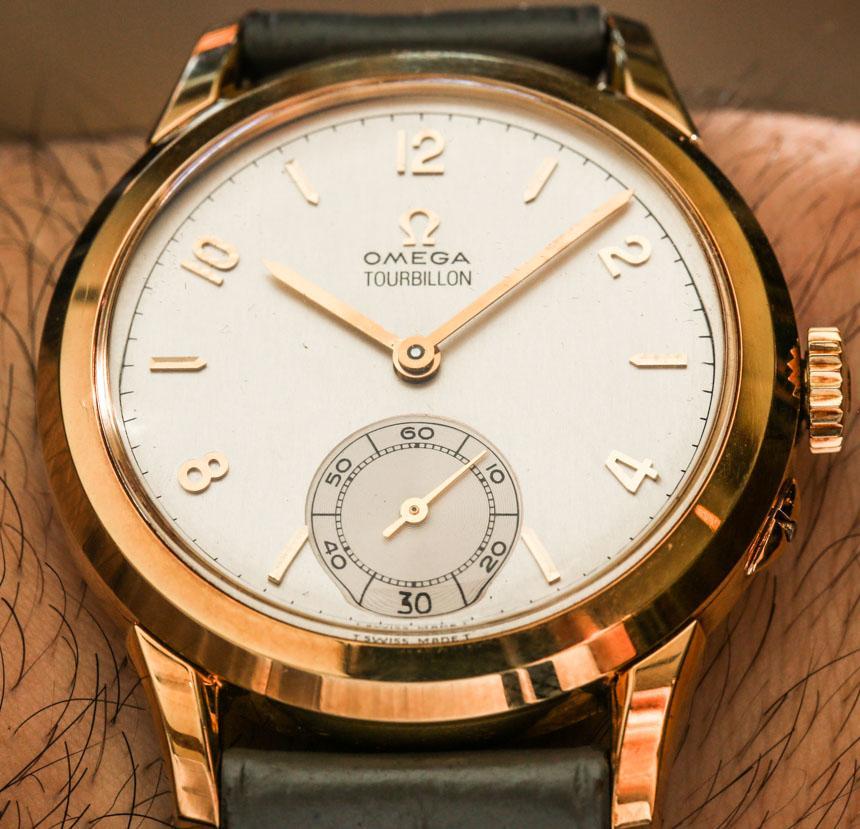
aBlogtoWatch: Wow! How did you come to acquire it?
JK: It took me years to find this piece. Before, I’d only seen it in publications. I got it from this lady in Zurich, who’d inherited it. It was not cheap!
aBlogtoWatch: So she knew what it was?
JK: Oh, yes. It actually came about from a recommendation from Mr. Richon. I told him what I wanted, and then when someone called him saying they had one, he let me know.
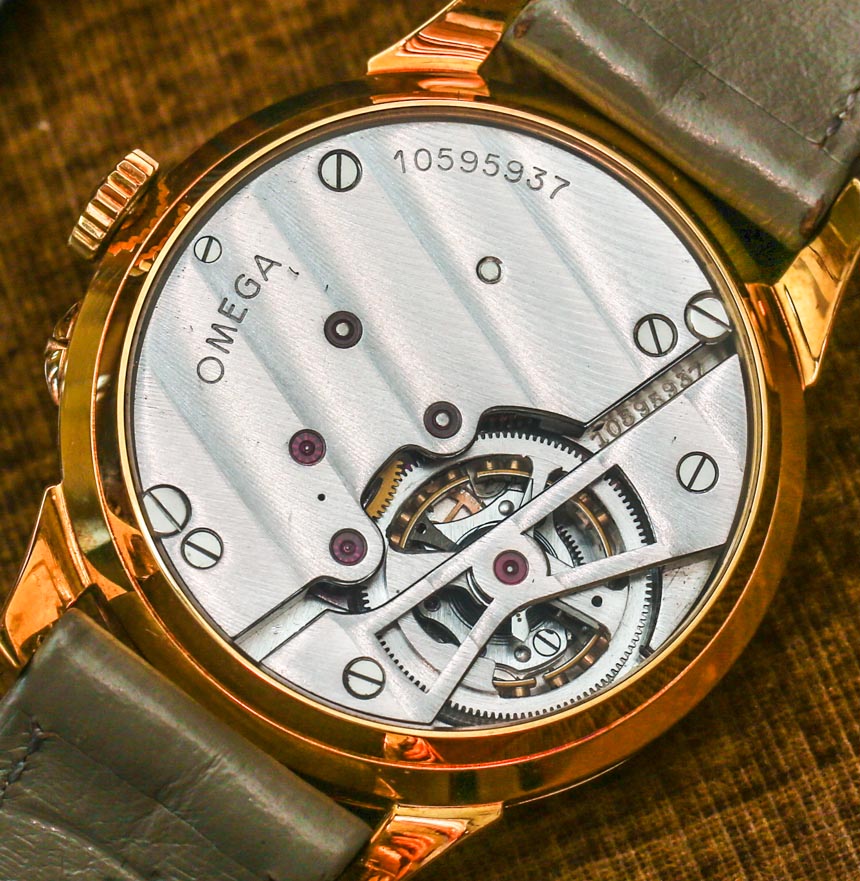
aBlogtoWatch: What is this piece’s significance – to you, to watchmaking history overall, and specifically to the brand?
JK: Omega was the first to put a tourbillon in a wristwatch. They made close to twelve tourbillon movements in the 1940s, and six or seven of them were stolen. This came from the famous chronometry competition. They made the movements, and then just decided to put them in cases! Look at the back – just beautiful. There are just a few left in the world, including the one that’s in the Omega Musée. And here’s a military chronograph – I think it’s calibre 2819 – that seems almost modern in its casing. The finish and the colors of the dial is just fantastic!
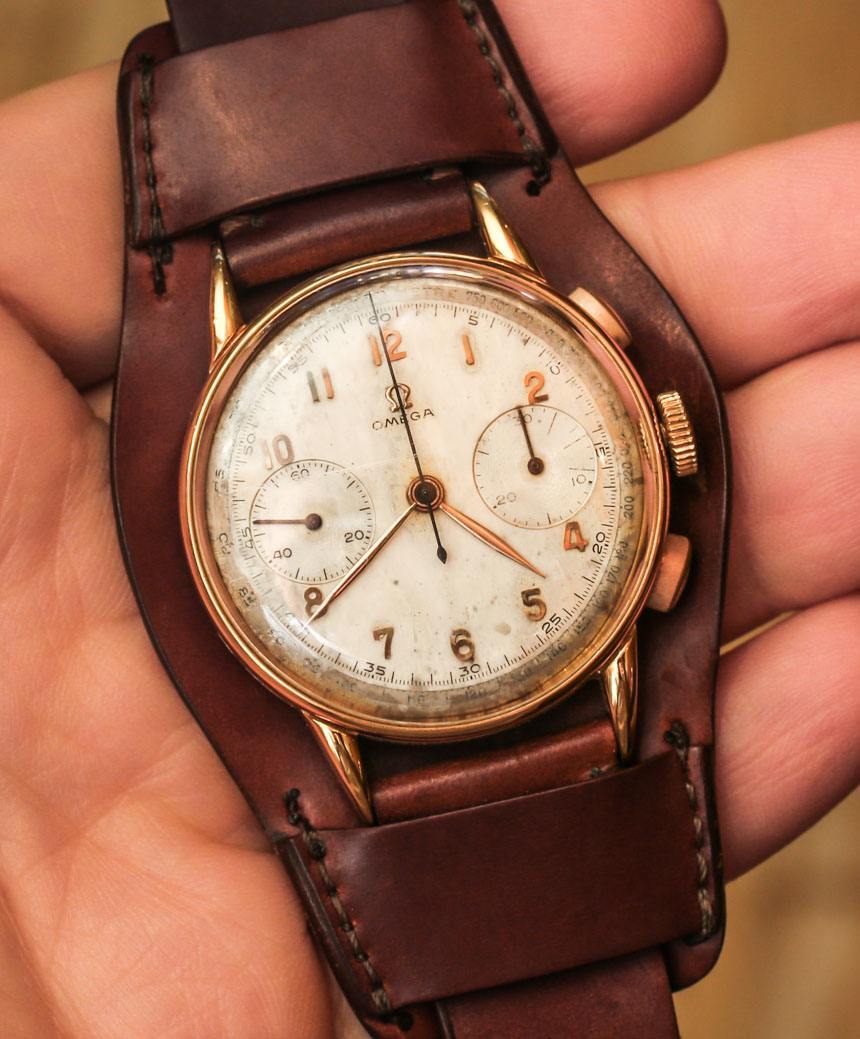
aBlogtoWatch: Many of these watches weren’t sold as luxury items, but well-made tools. And yes, some of them have gold cases, but a lot of that was because steel was difficult to take care of, and gold didn’t tarnish.
JK: How people used watches back then is very different from right now. Watches these days have become more like jewelry pieces. In those days, because it was hard to acquire a watch, they appreciated timepieces more. Here’s the last piece I have to show you: an Omega chronograph from the ’40s. This watch was issued to a pilot in the army: there are numbers on the bezel, but not on the dial – classic military style. It’s in fantastic condition; the case work and dial are incredible. This watch is extremely, extremely rare: before I found it, I’d only seen this watch in sketches maybe – if at all.
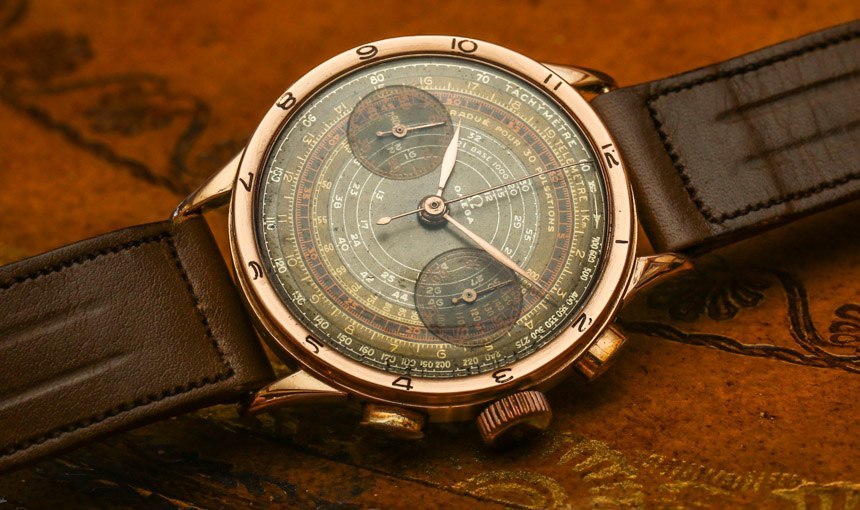
aBlogtoWatch: Where else in the world do we find serious Omega collectors today?
JK: There are a few collectors in Hong Kong I work with, and also in Germany, Portugal, and Chile. I also work with a lot of Japanese collectors, and they are fantastic! The way they take care of the watches – I’ve never seen anything like that.
aBlogtoWatch: If you had to impart one lesson to a new collector today, what would it be?
JK: One thing I’ve learned: if you want to be very successful, specialize in one area. It’s like real estate; if anything becomes available in that area, you know what to buy. Most of all, it’s important to buy unique pieces. And if you have something special, something unique – let me help you with that piece! jackmond.com


